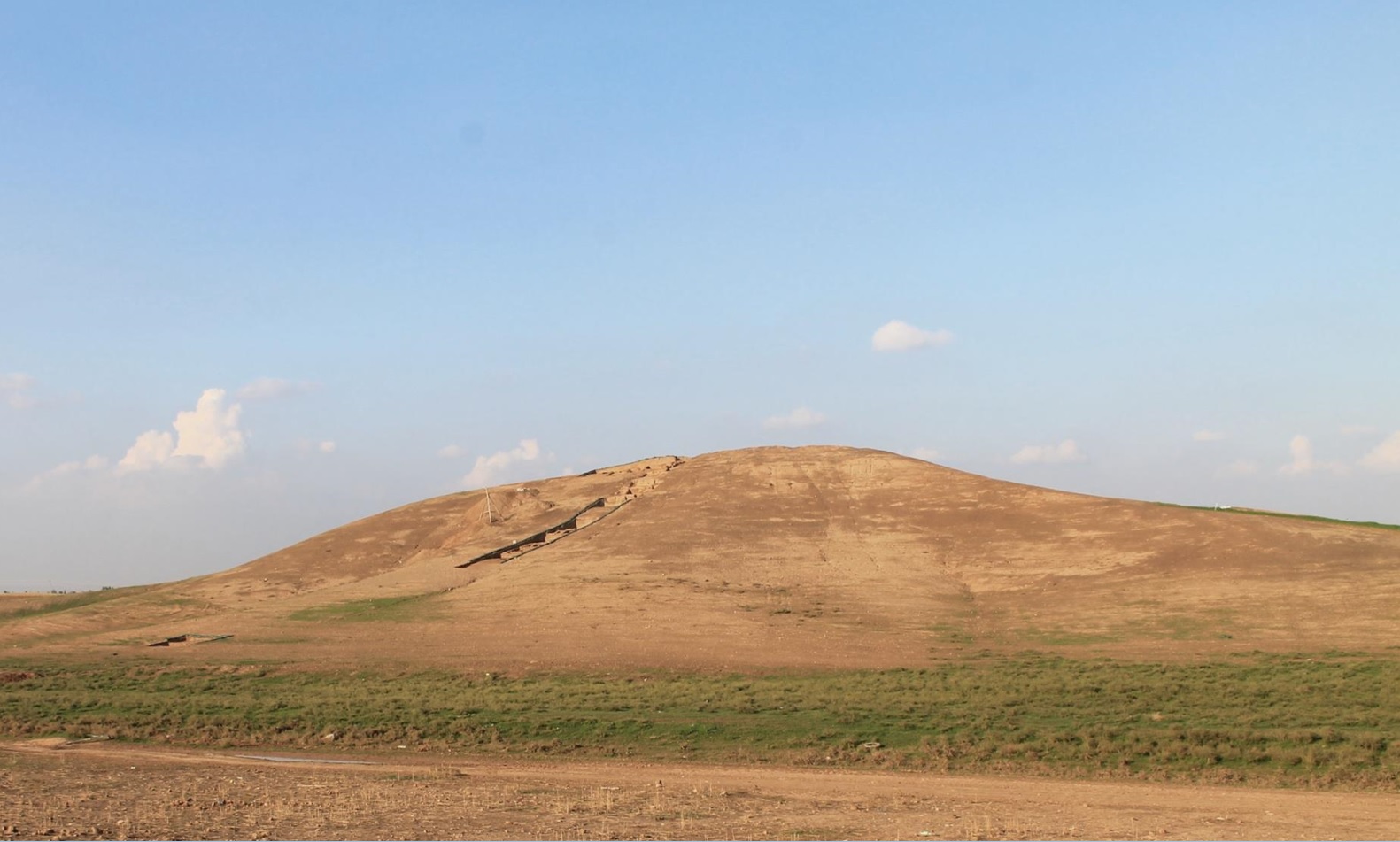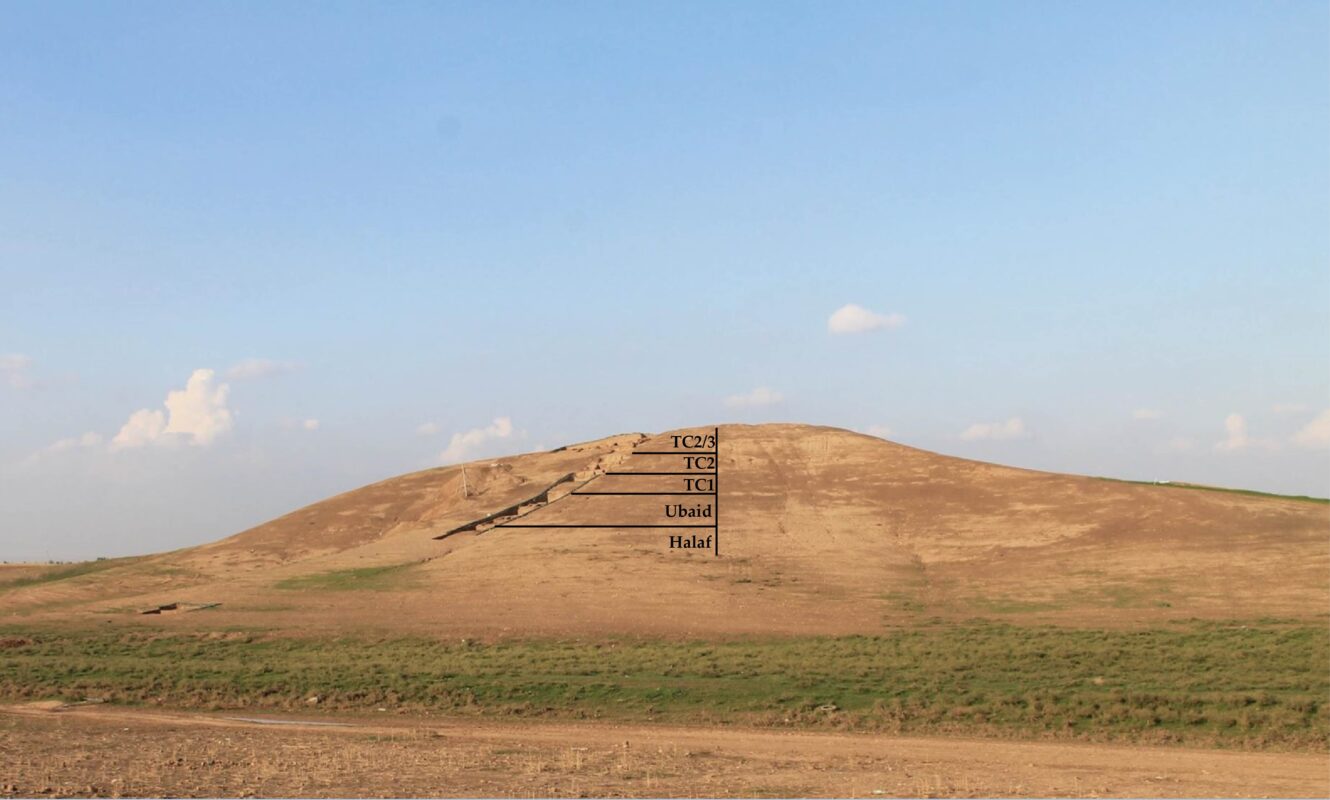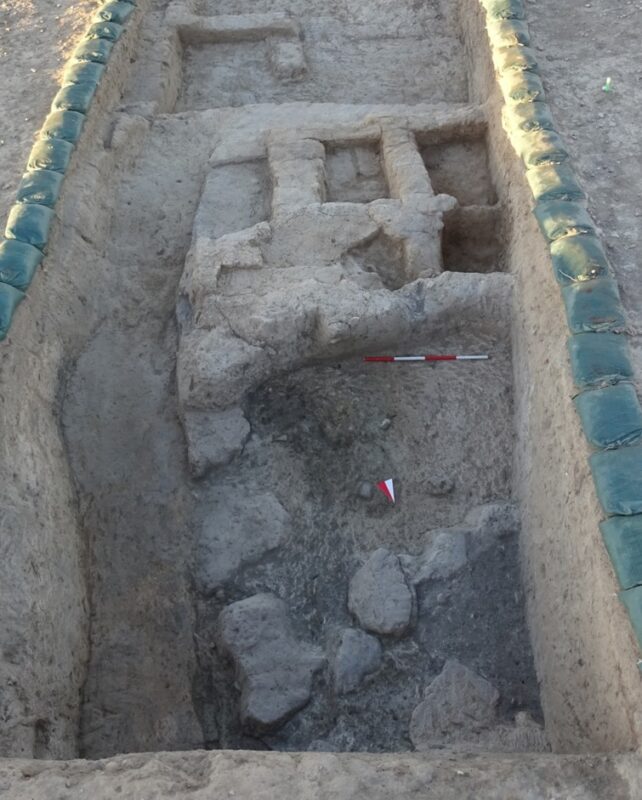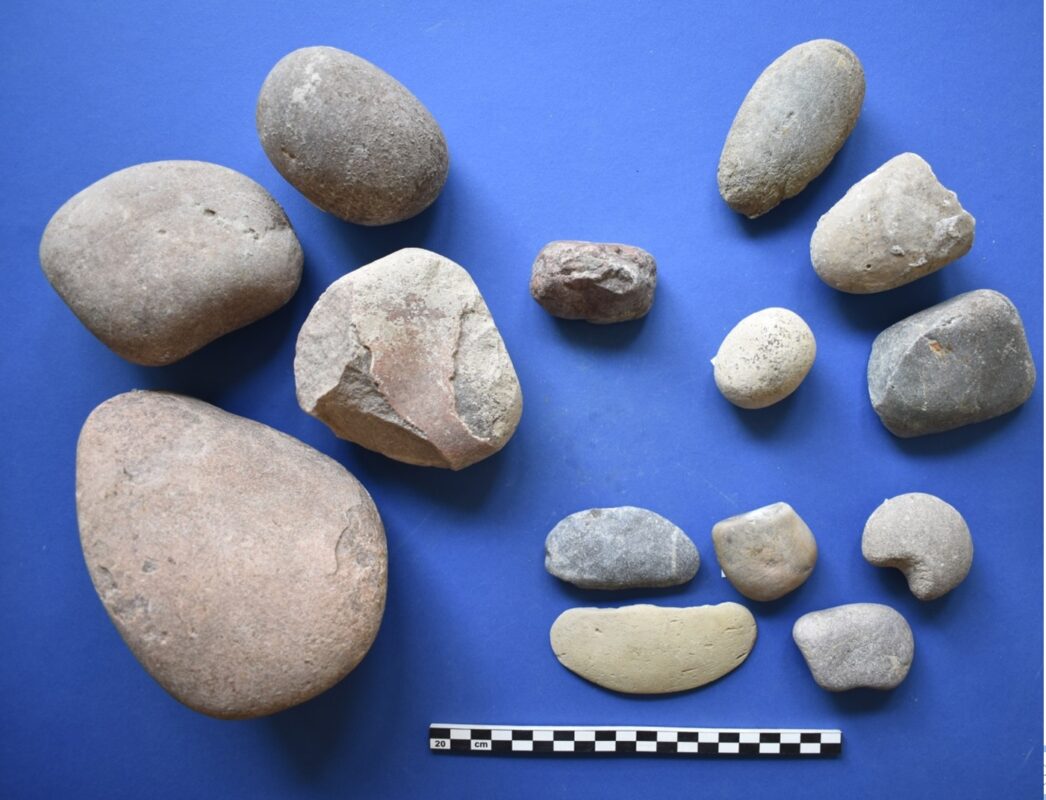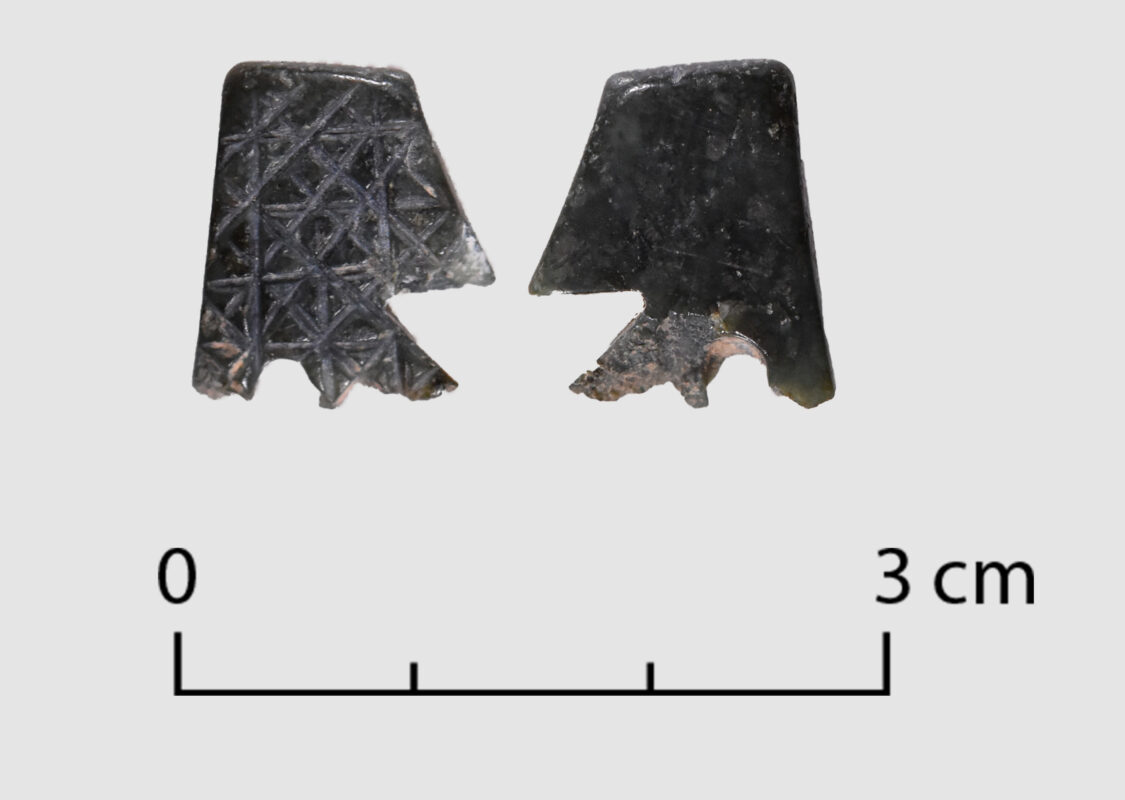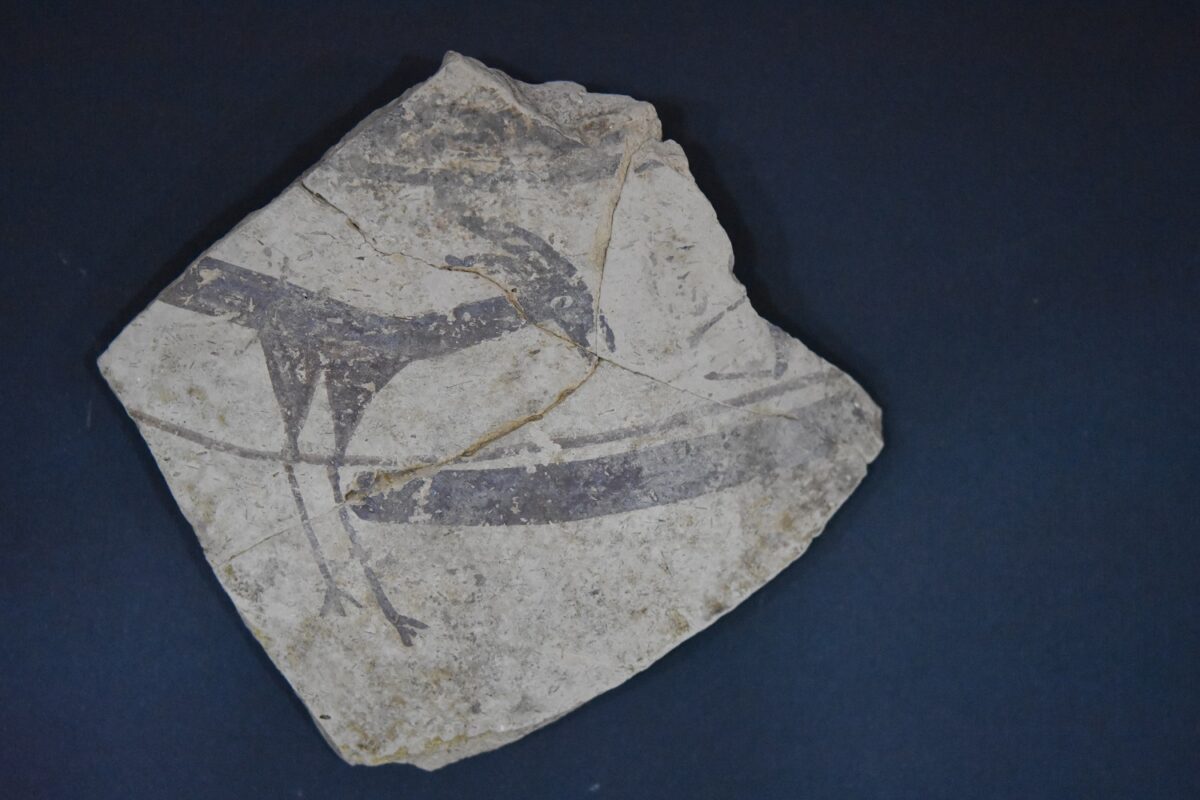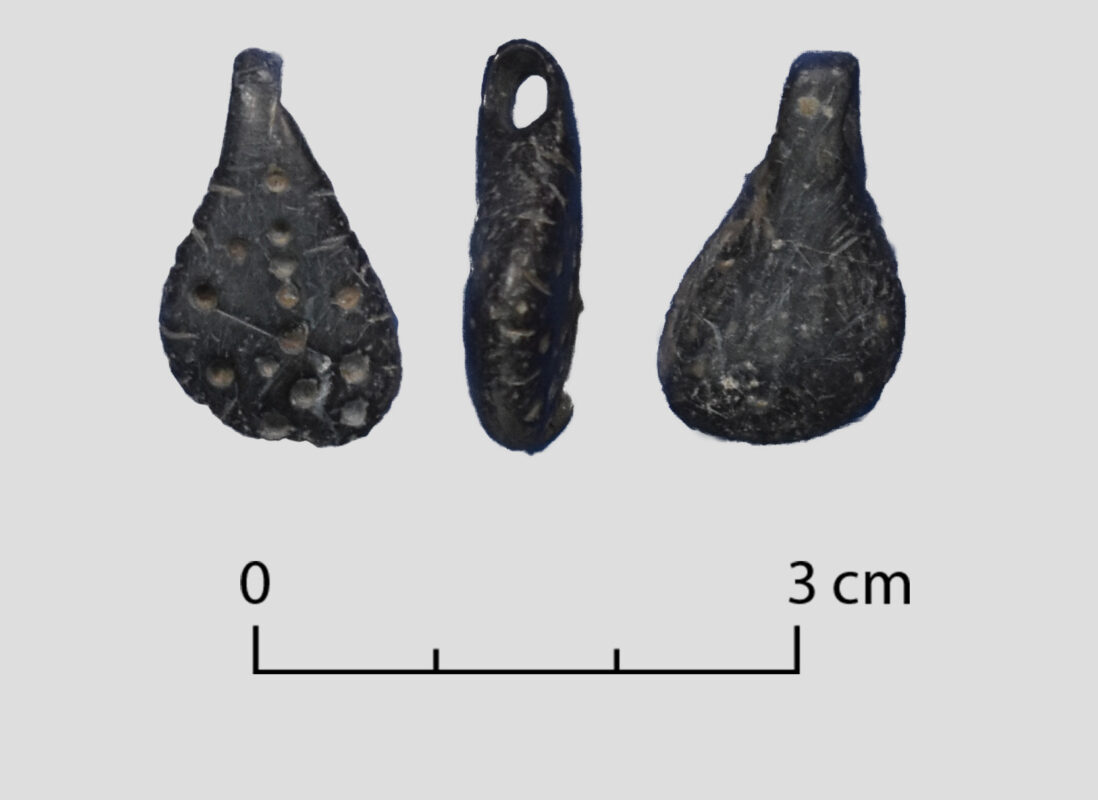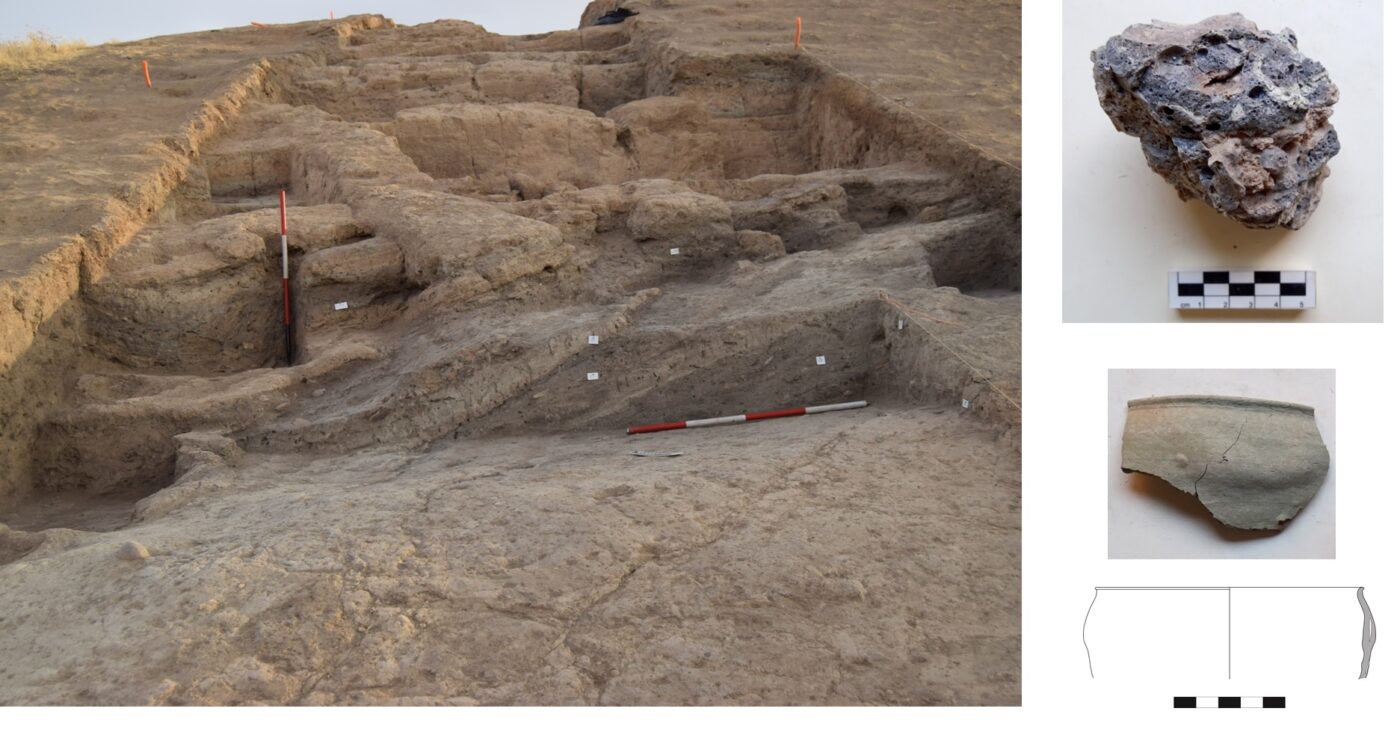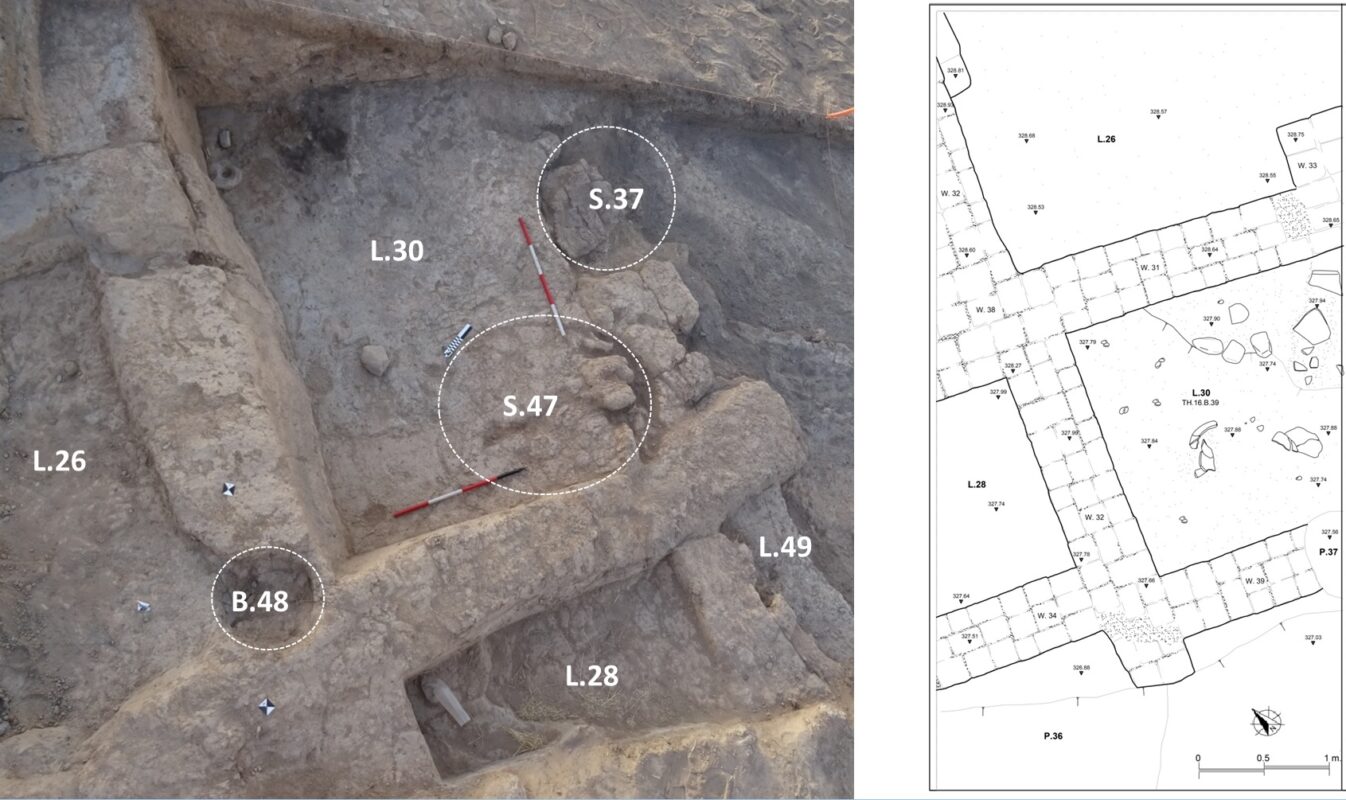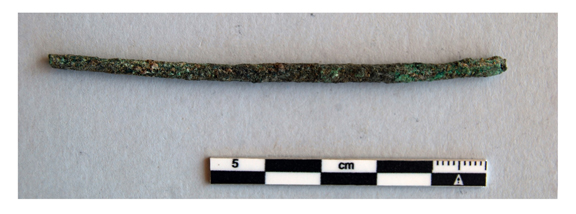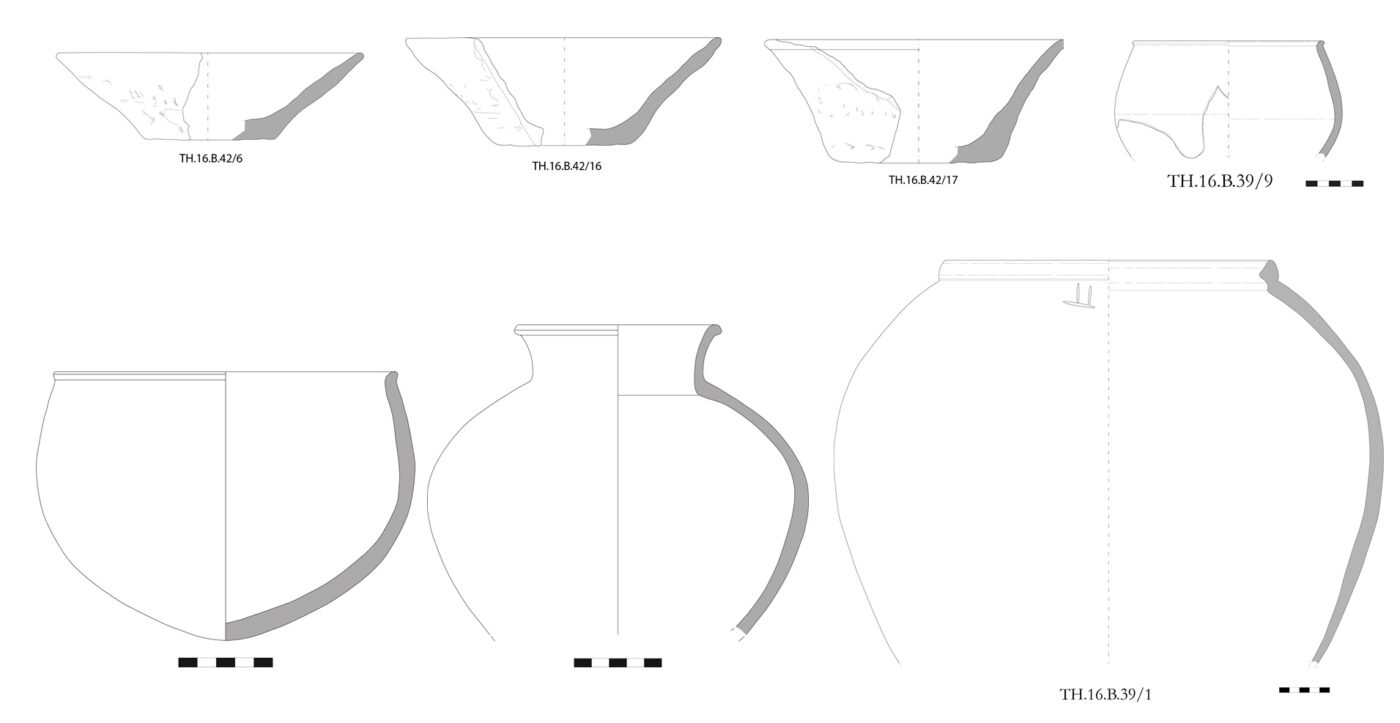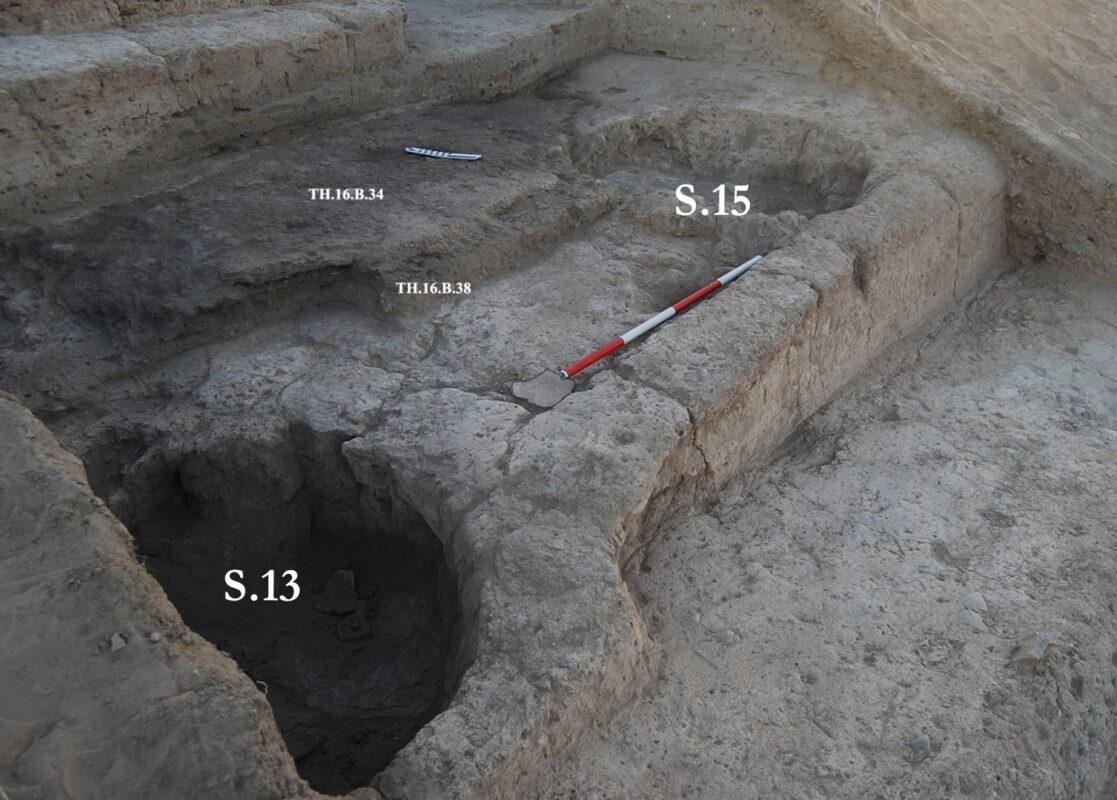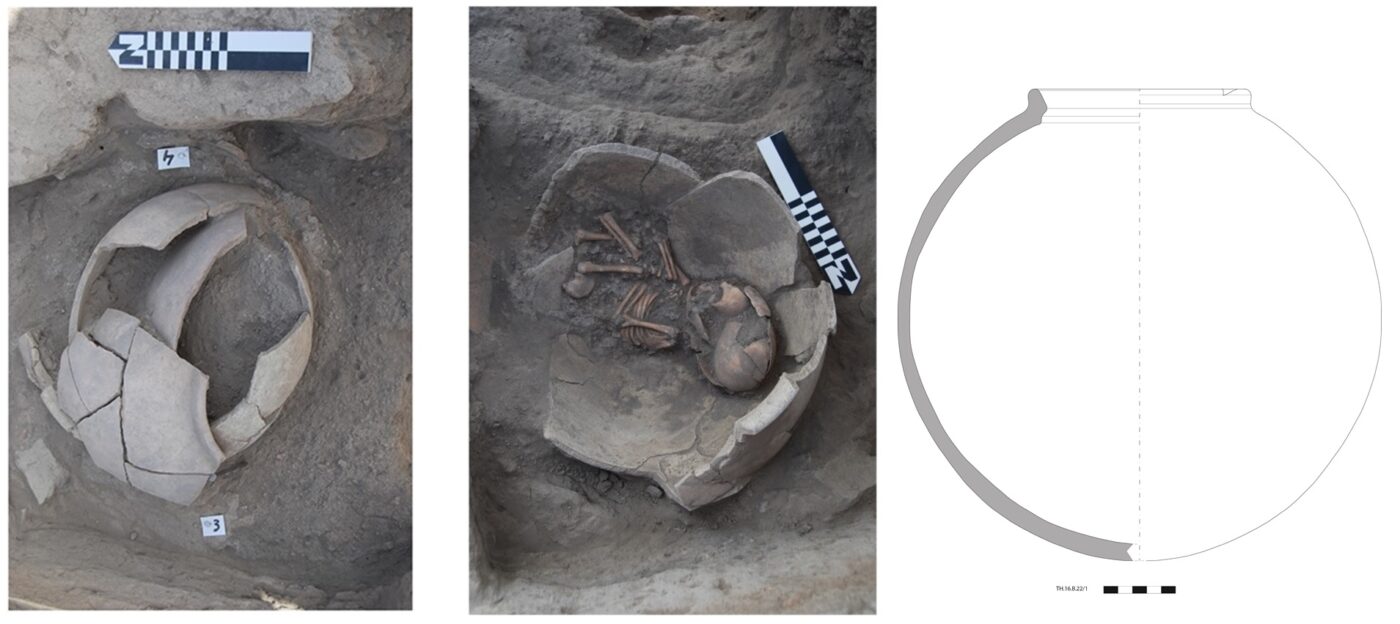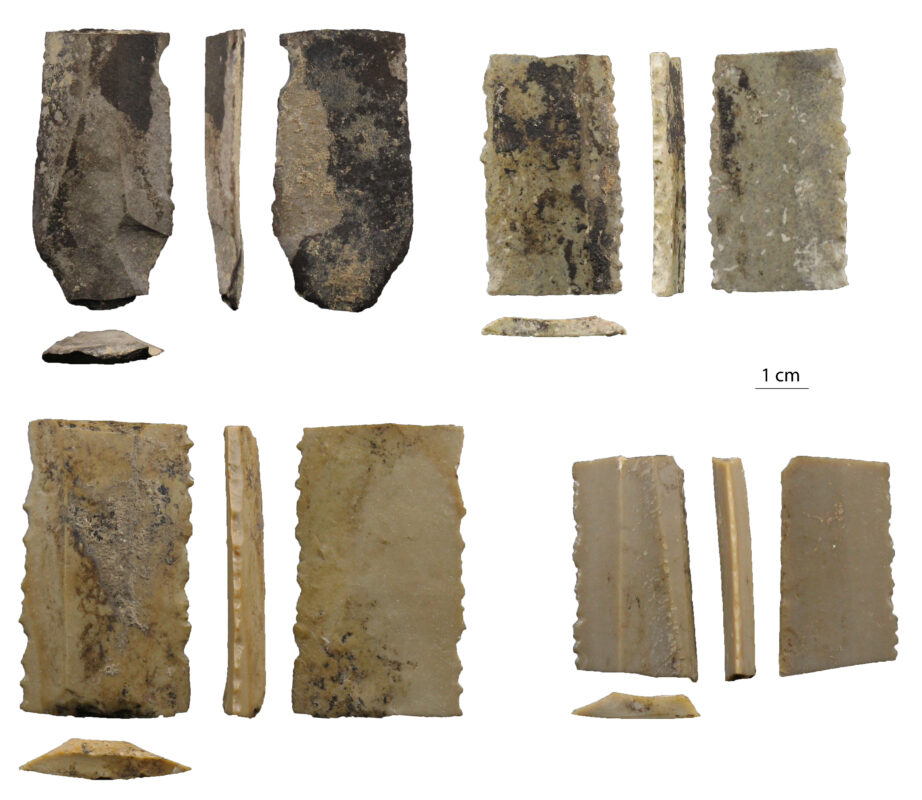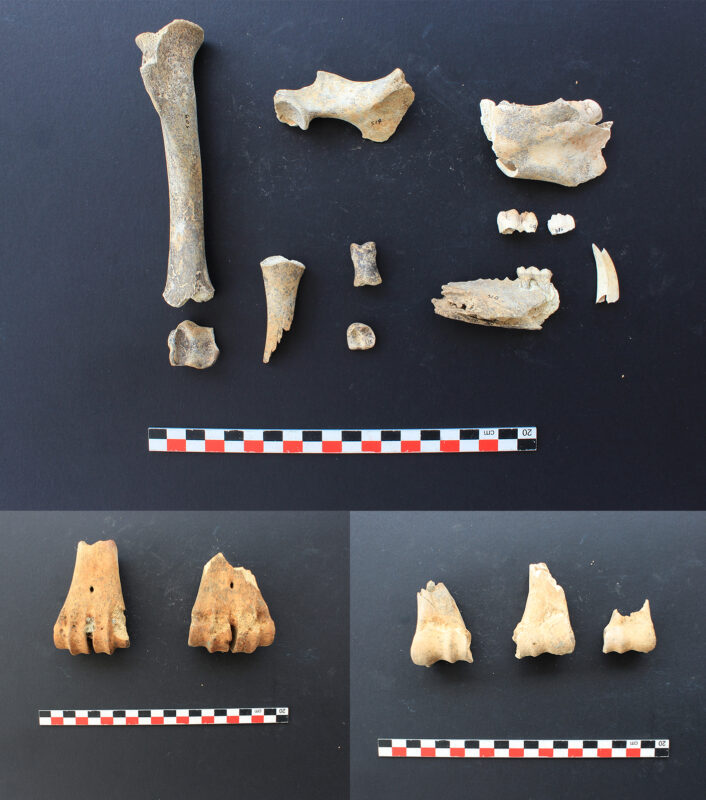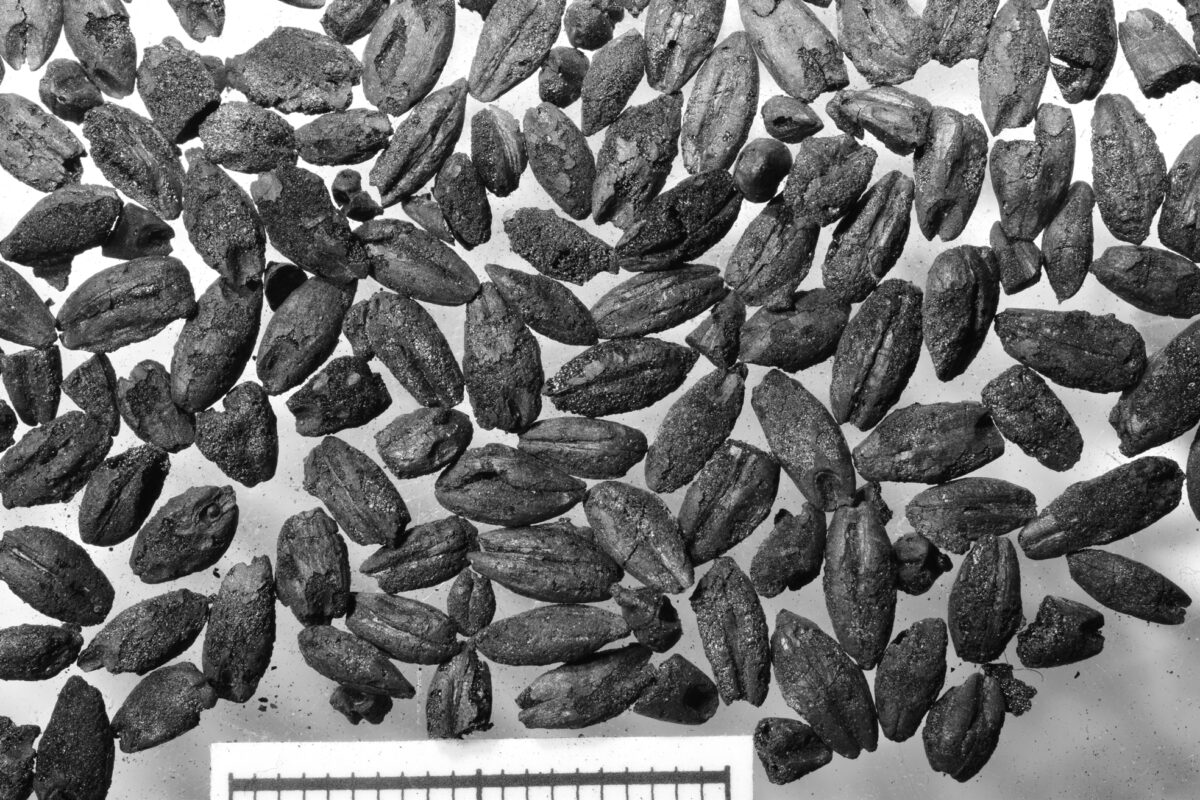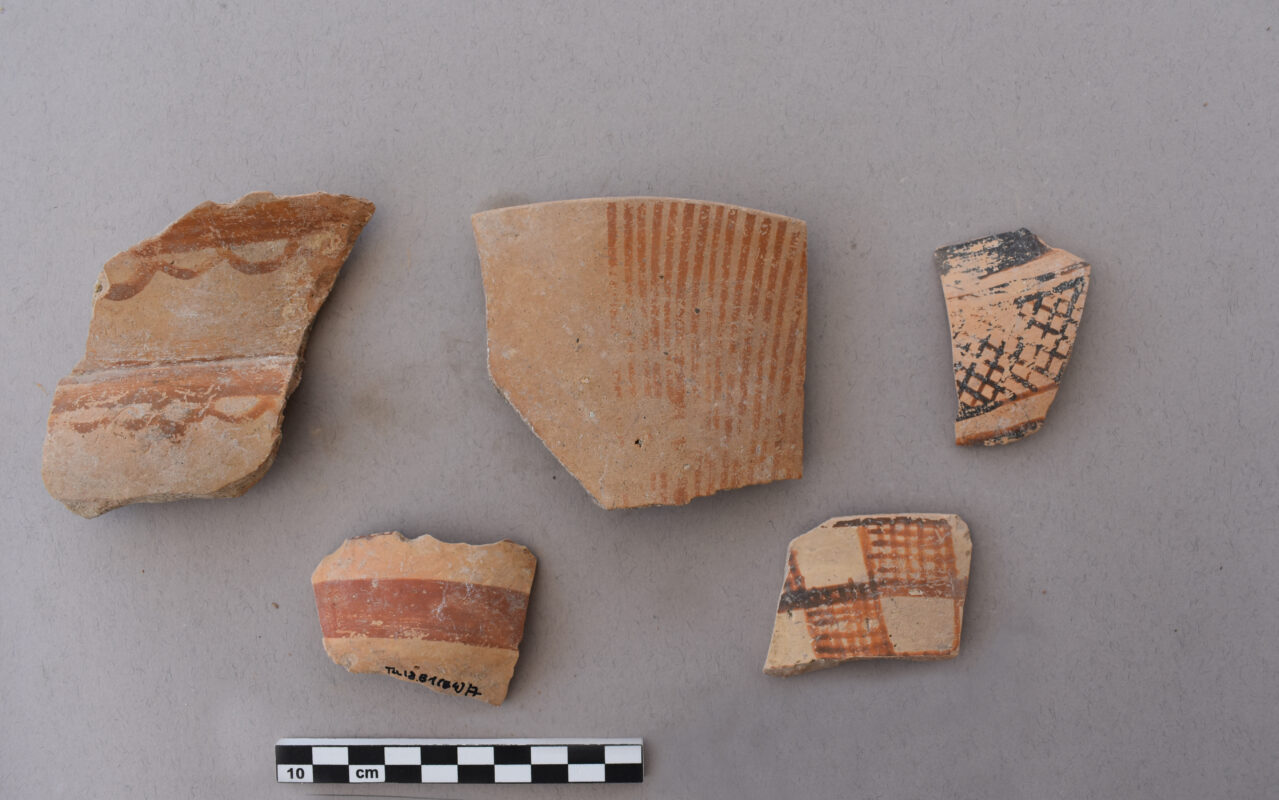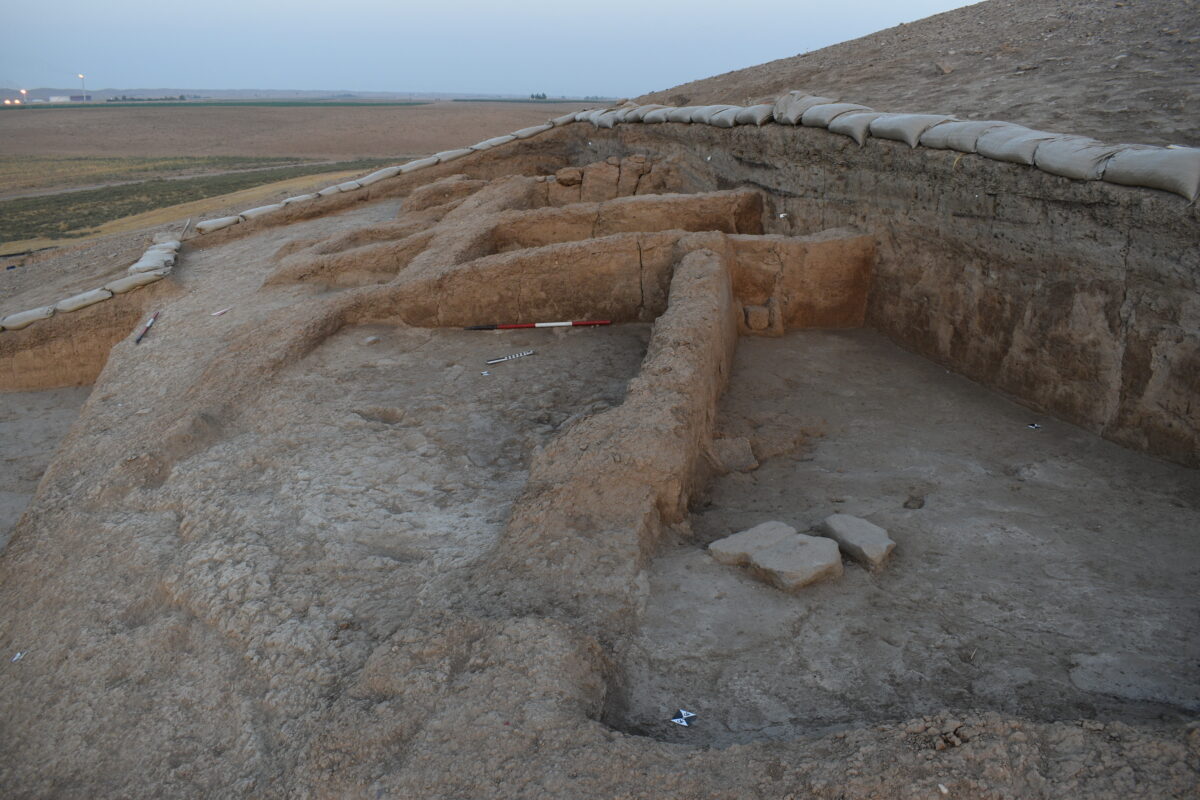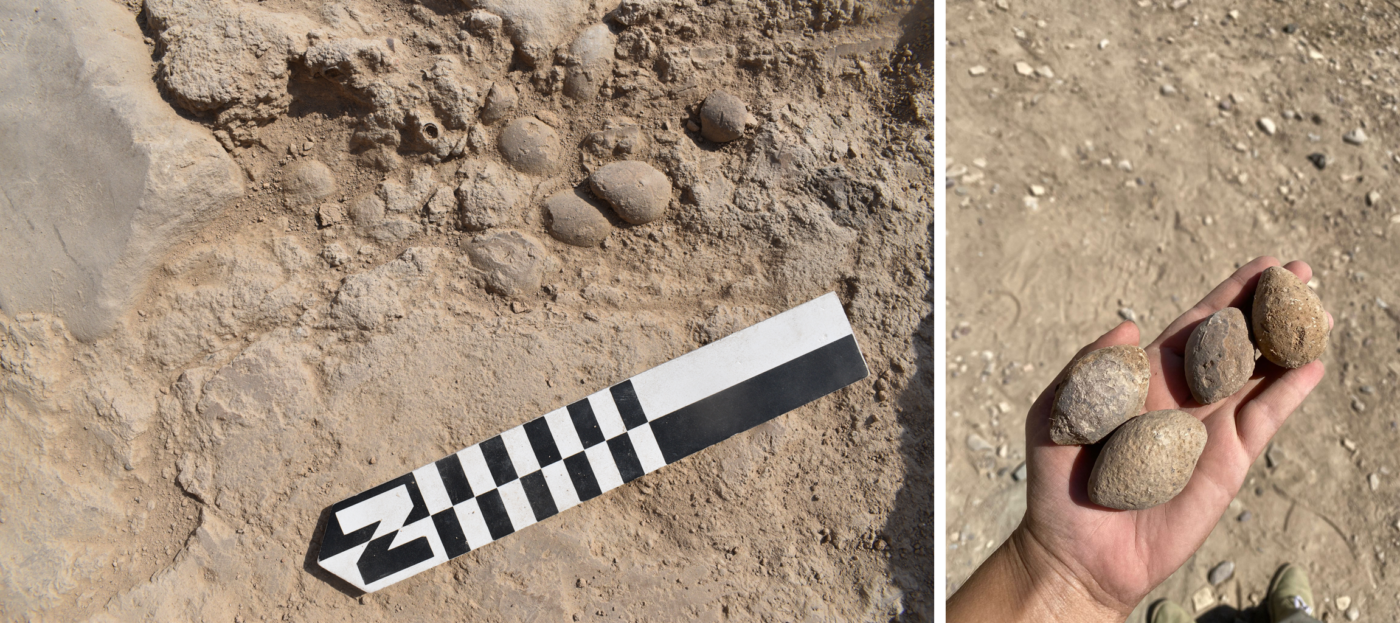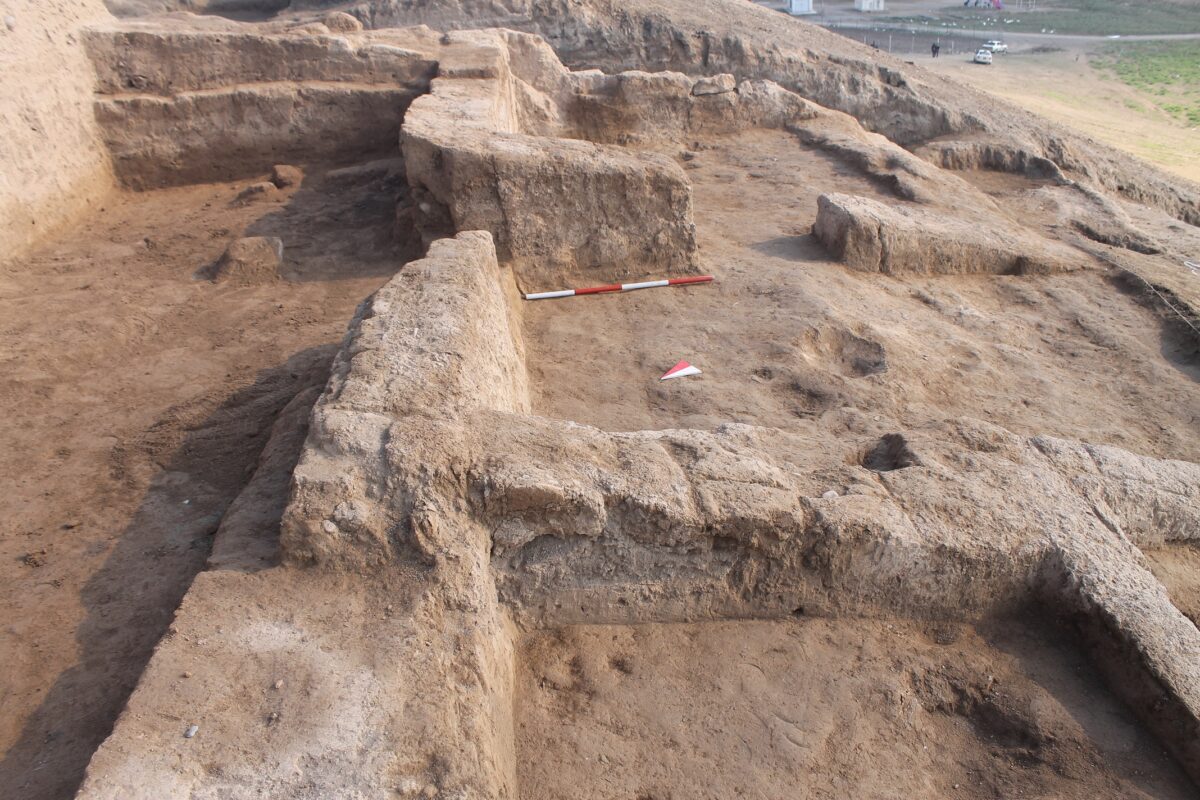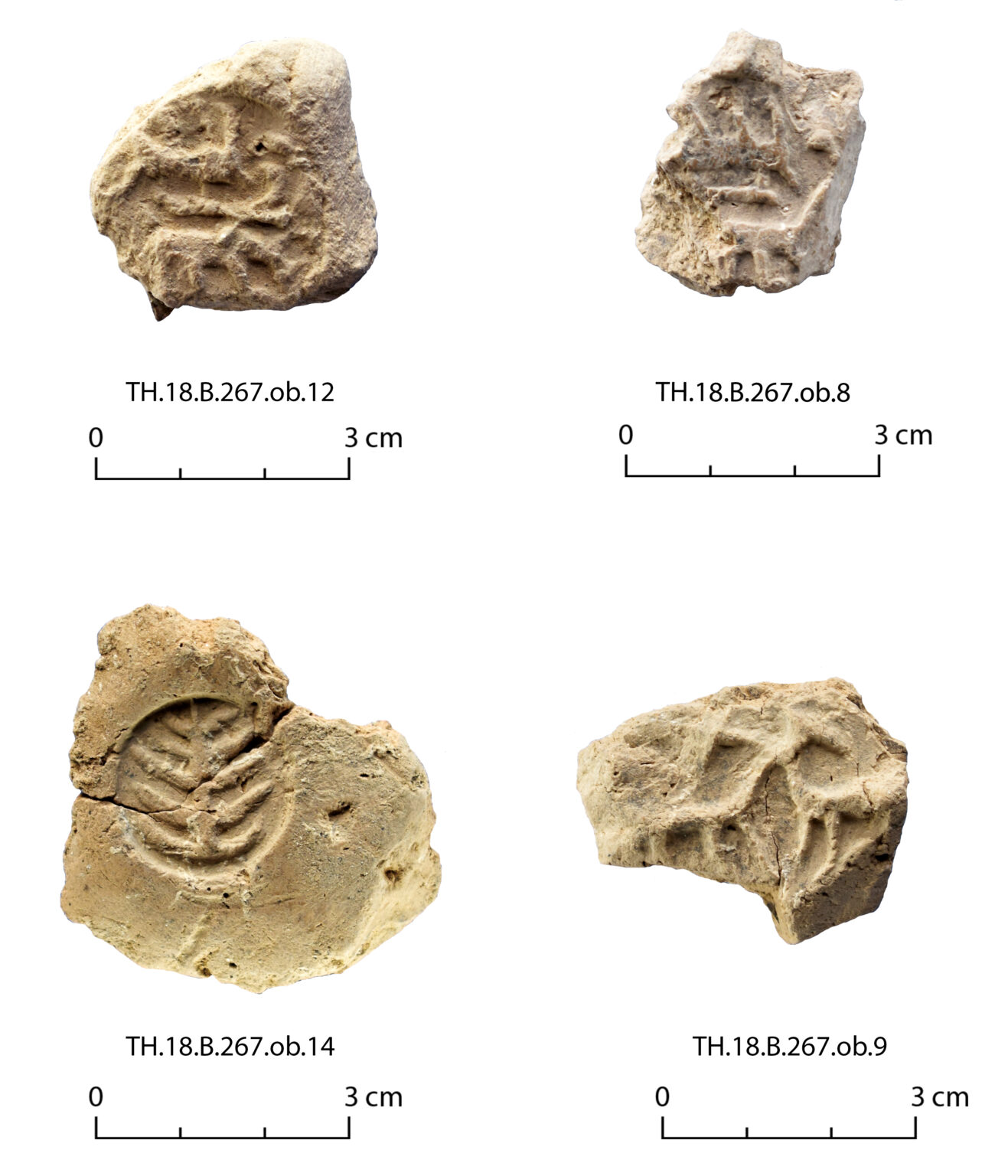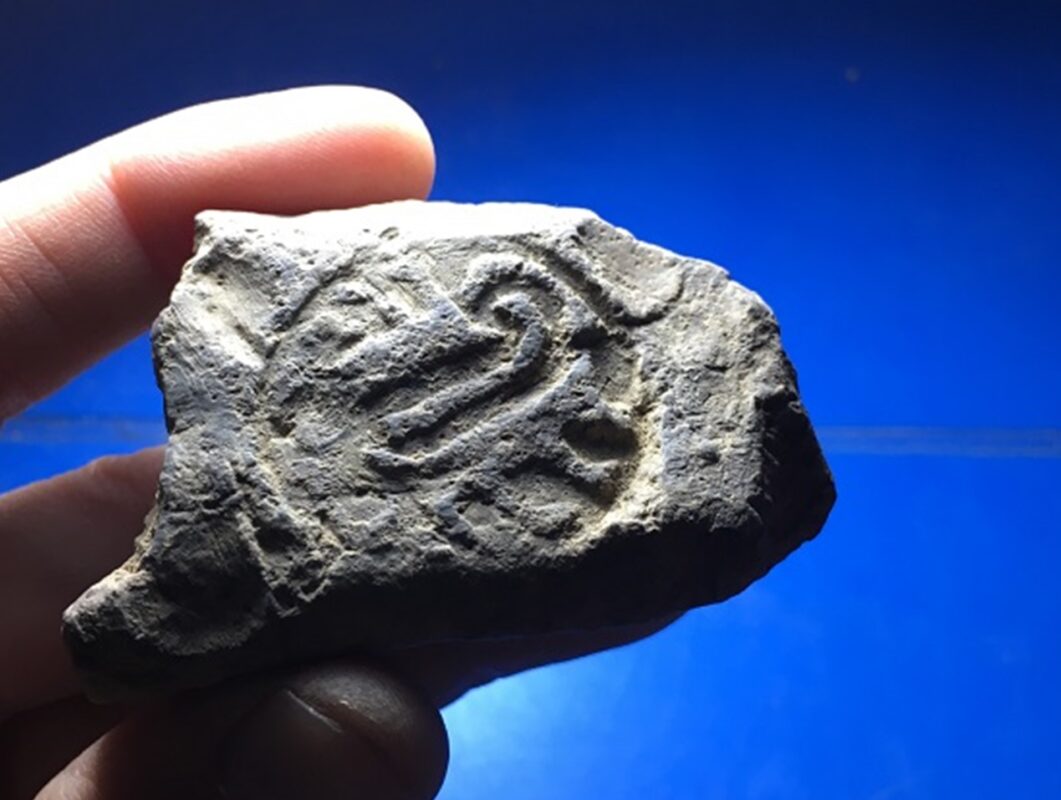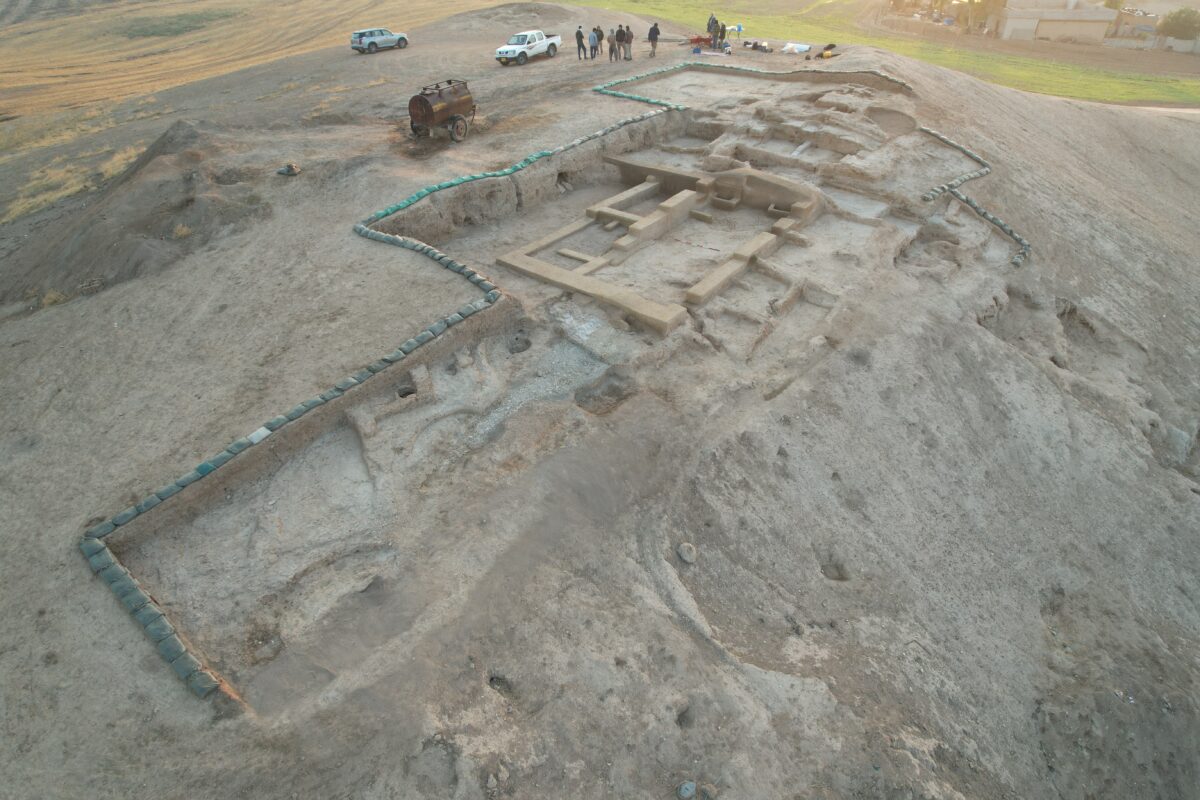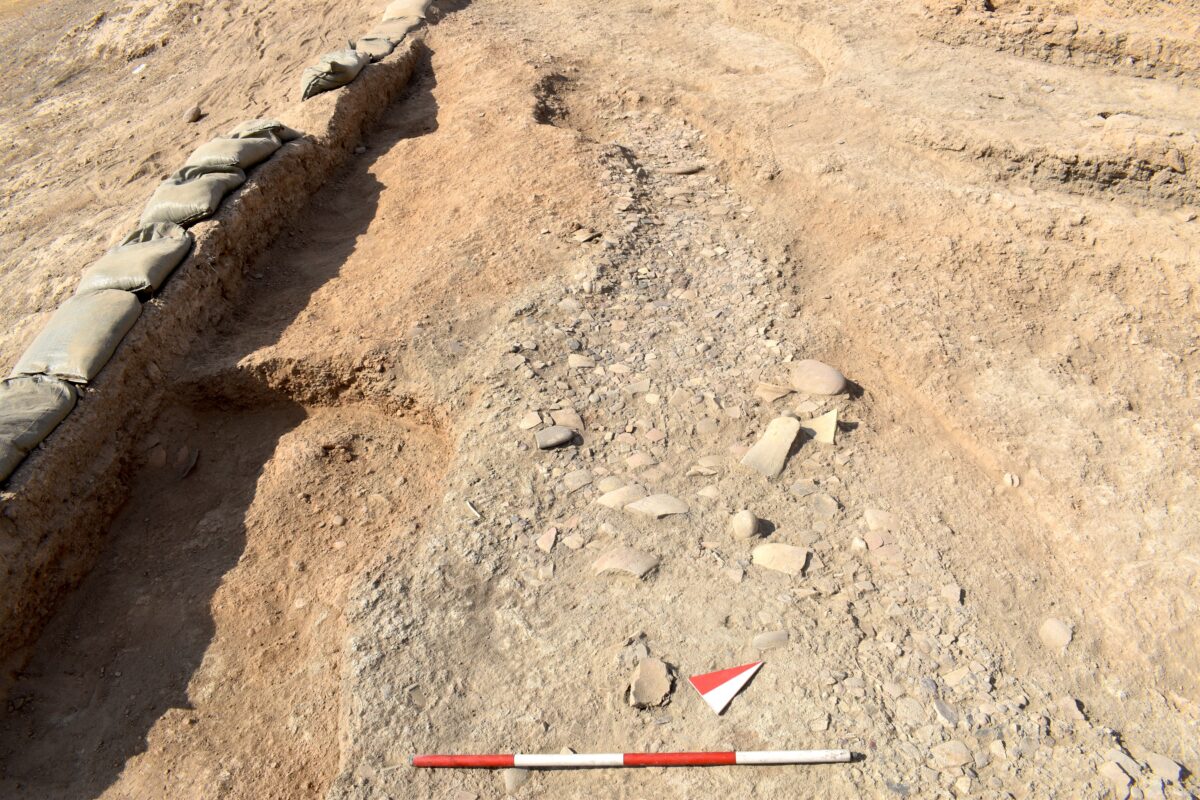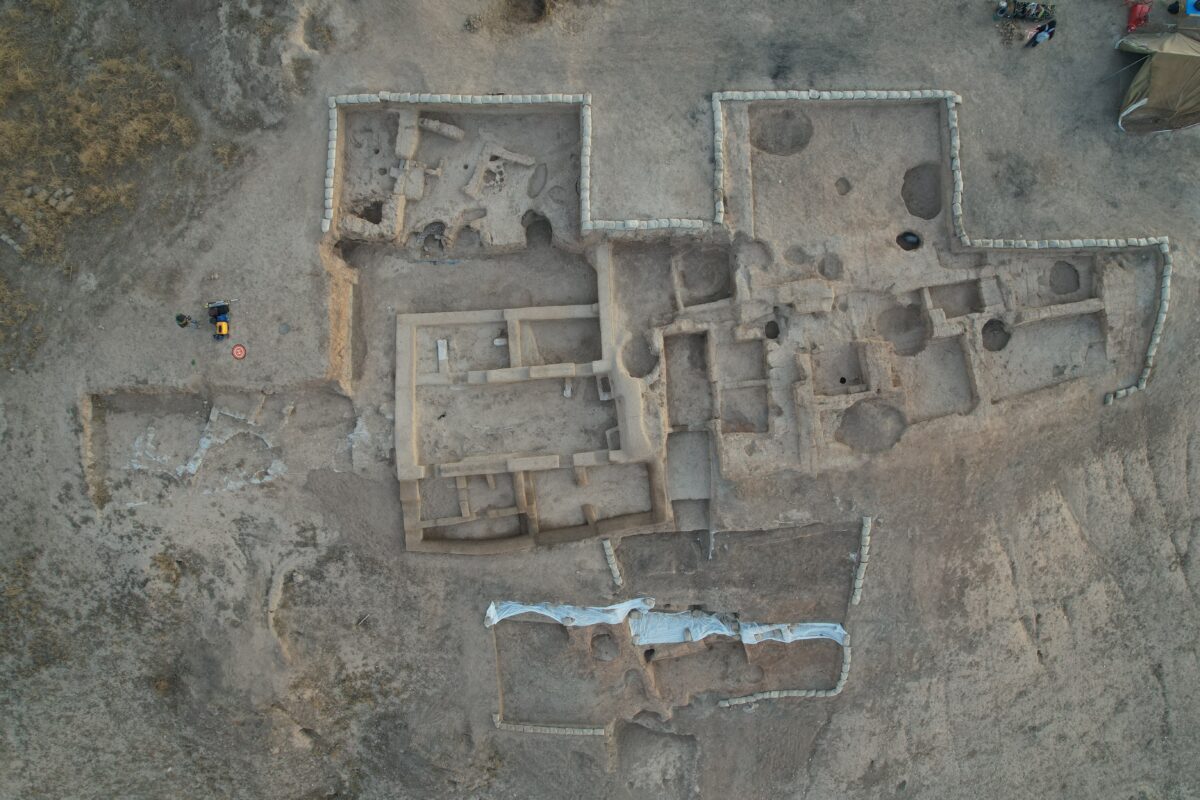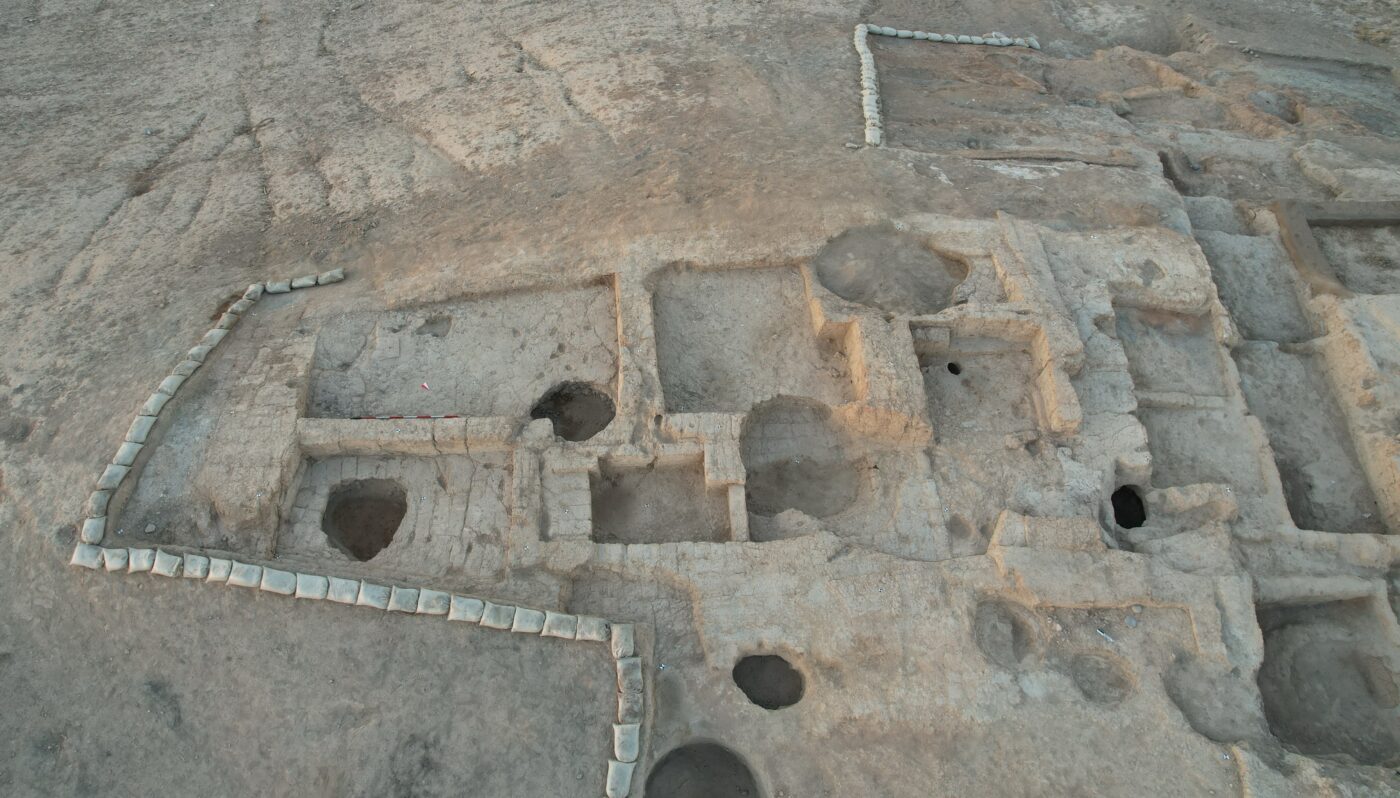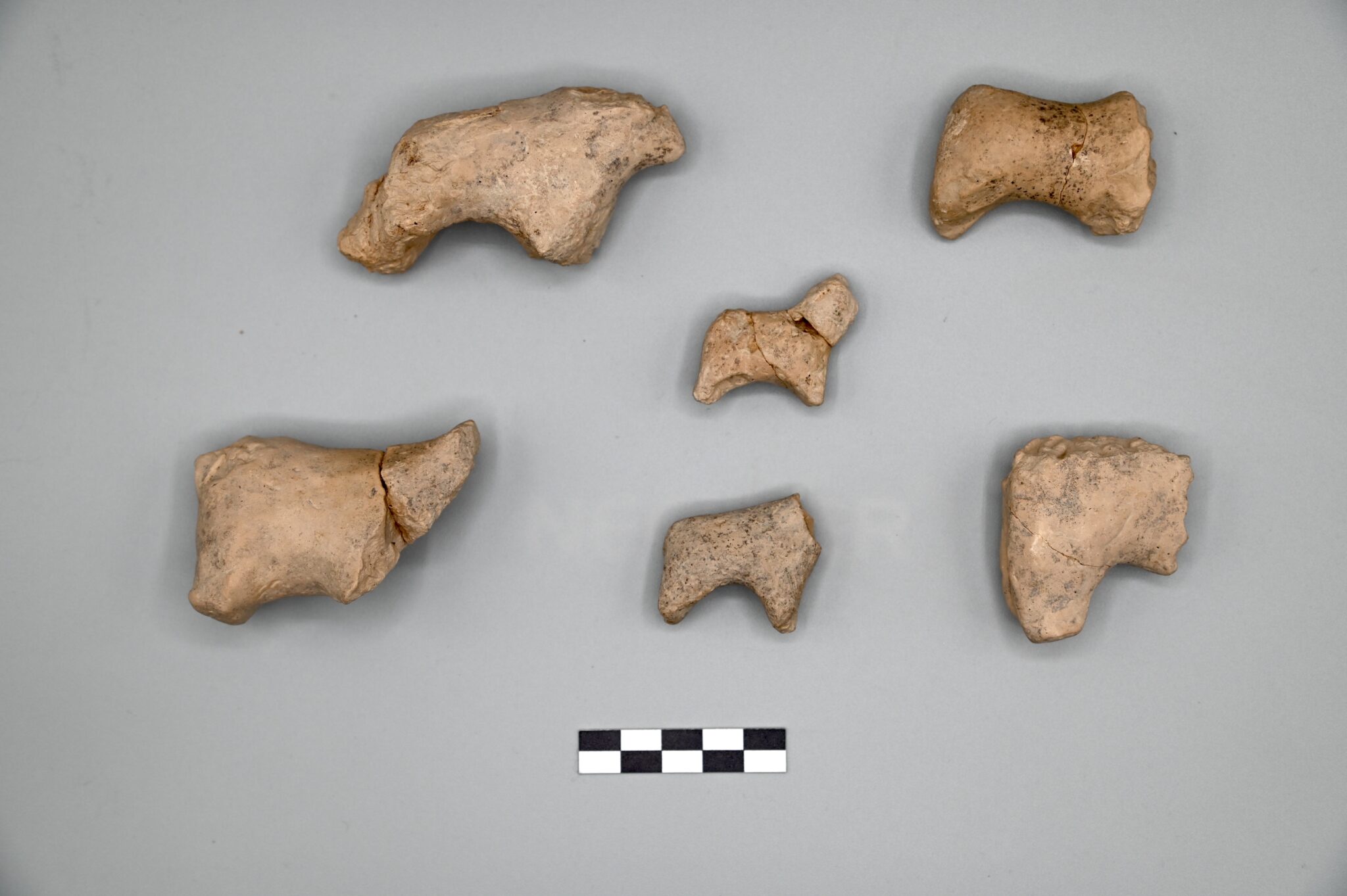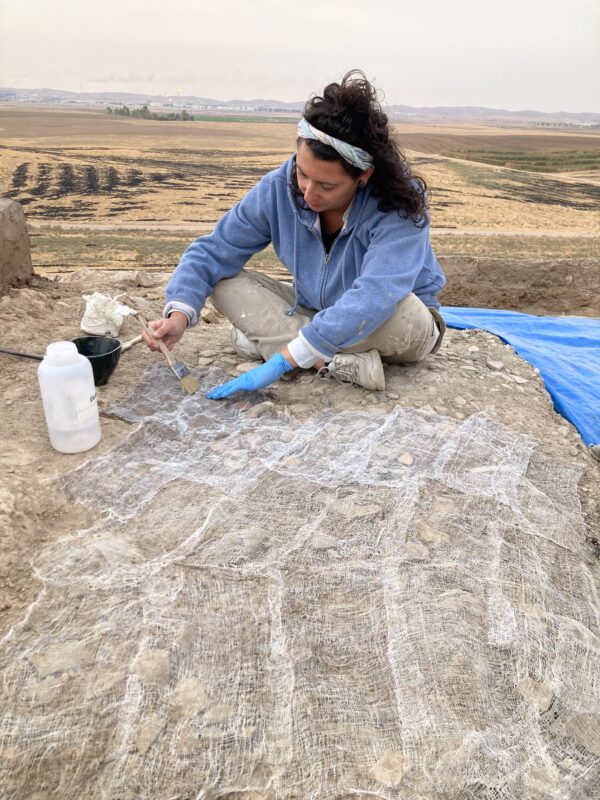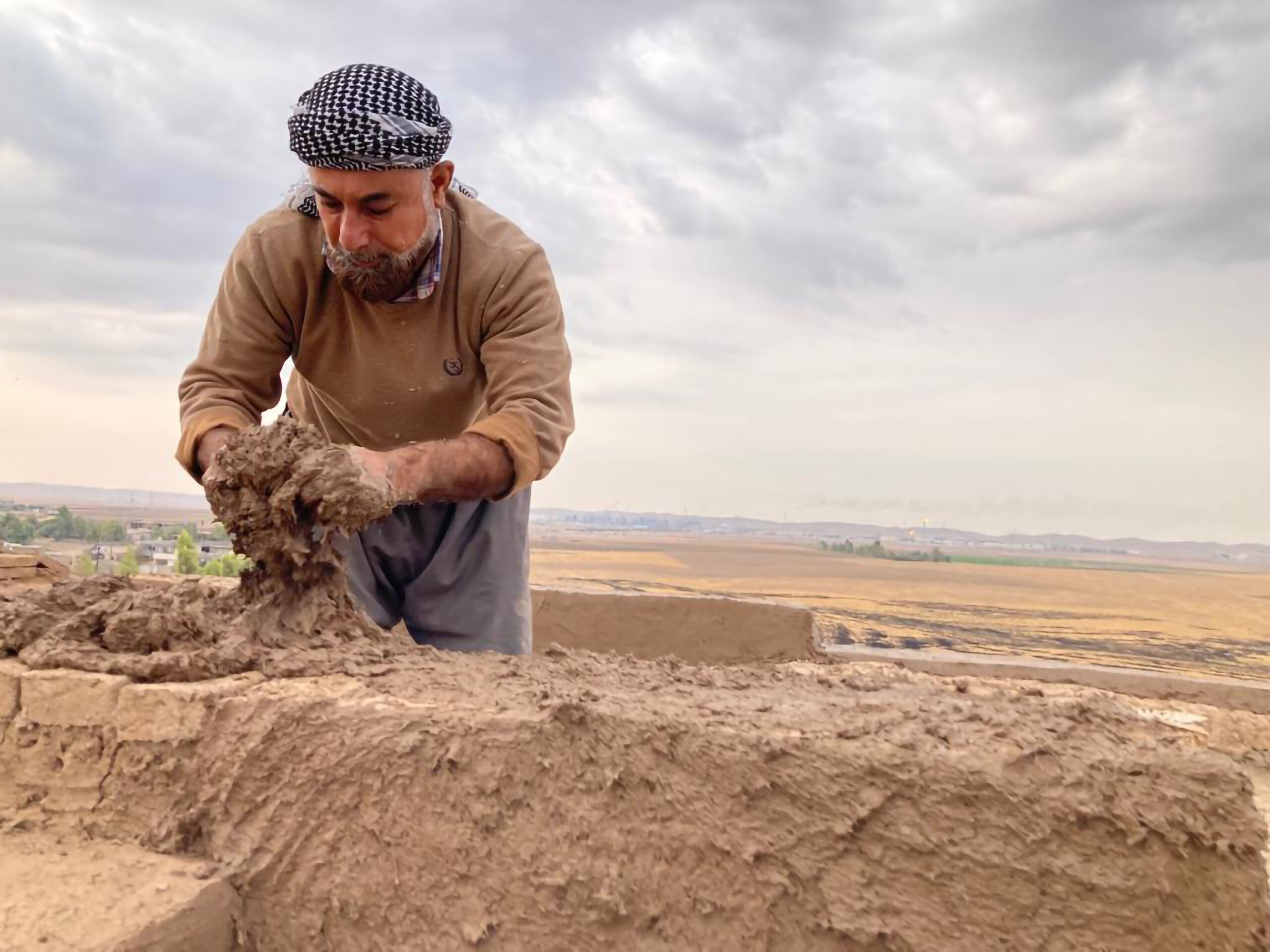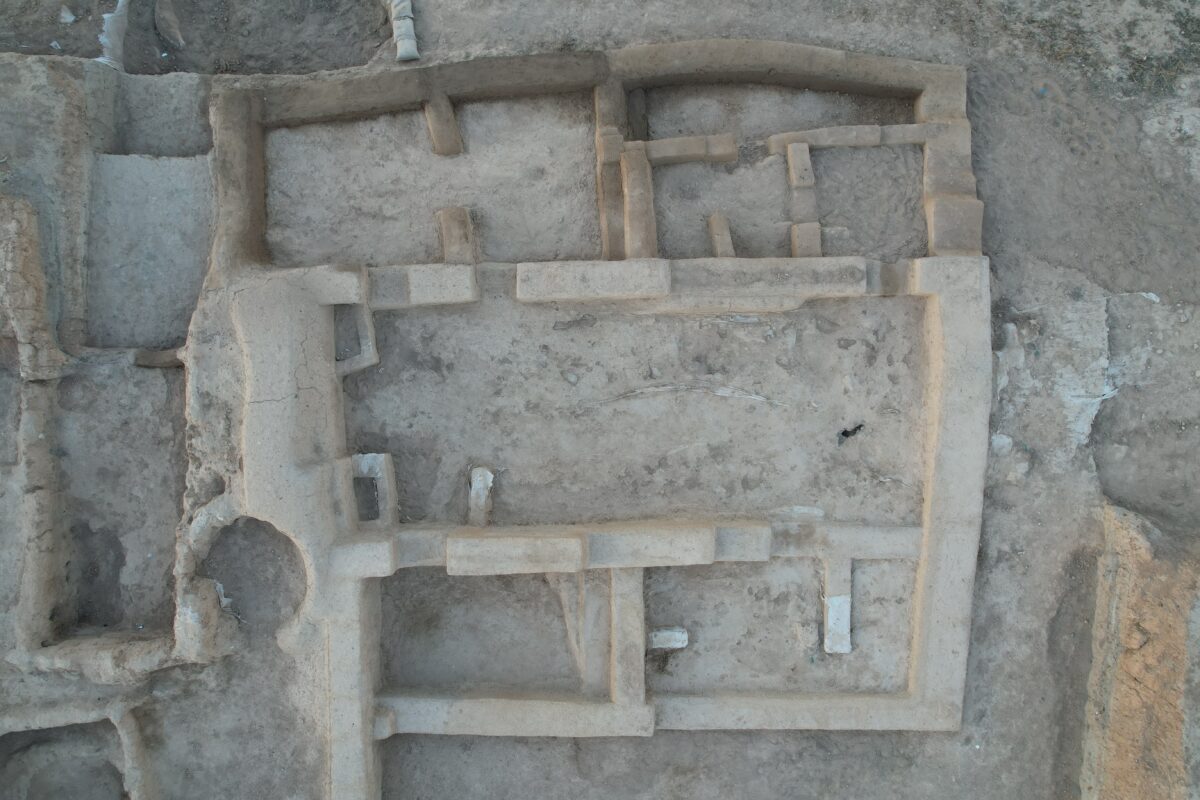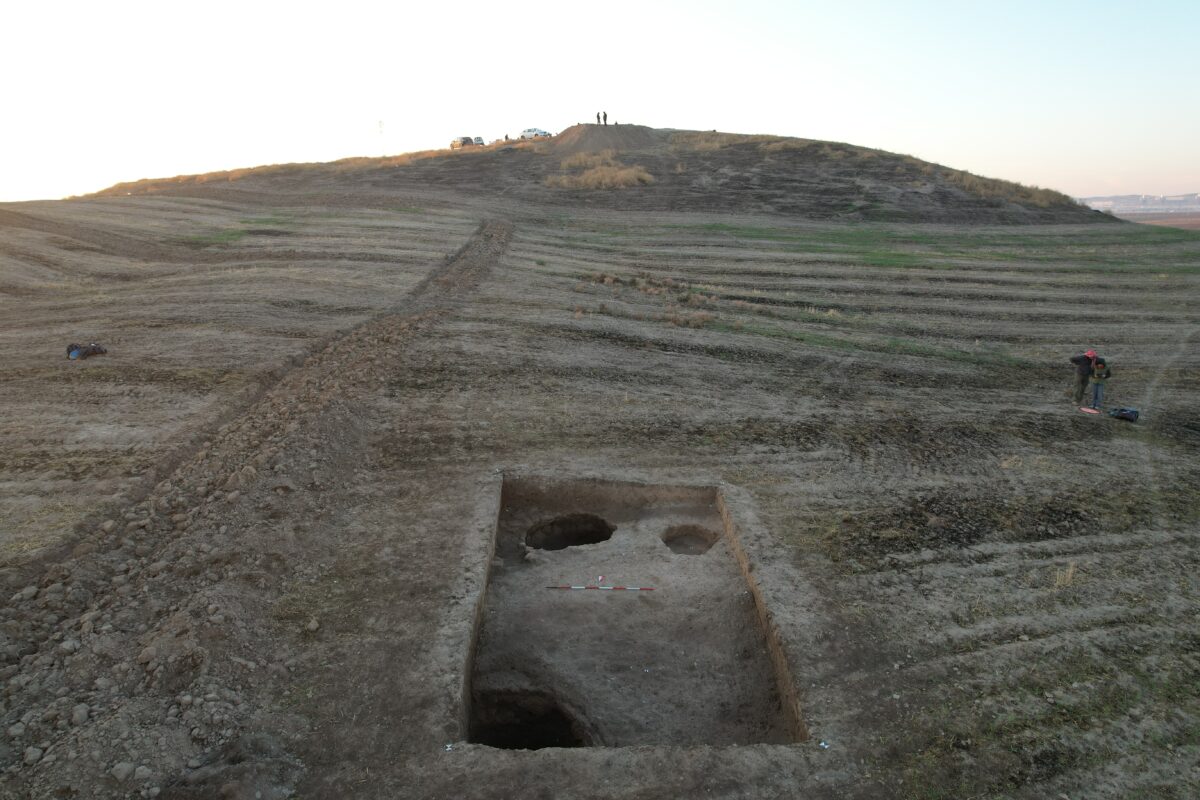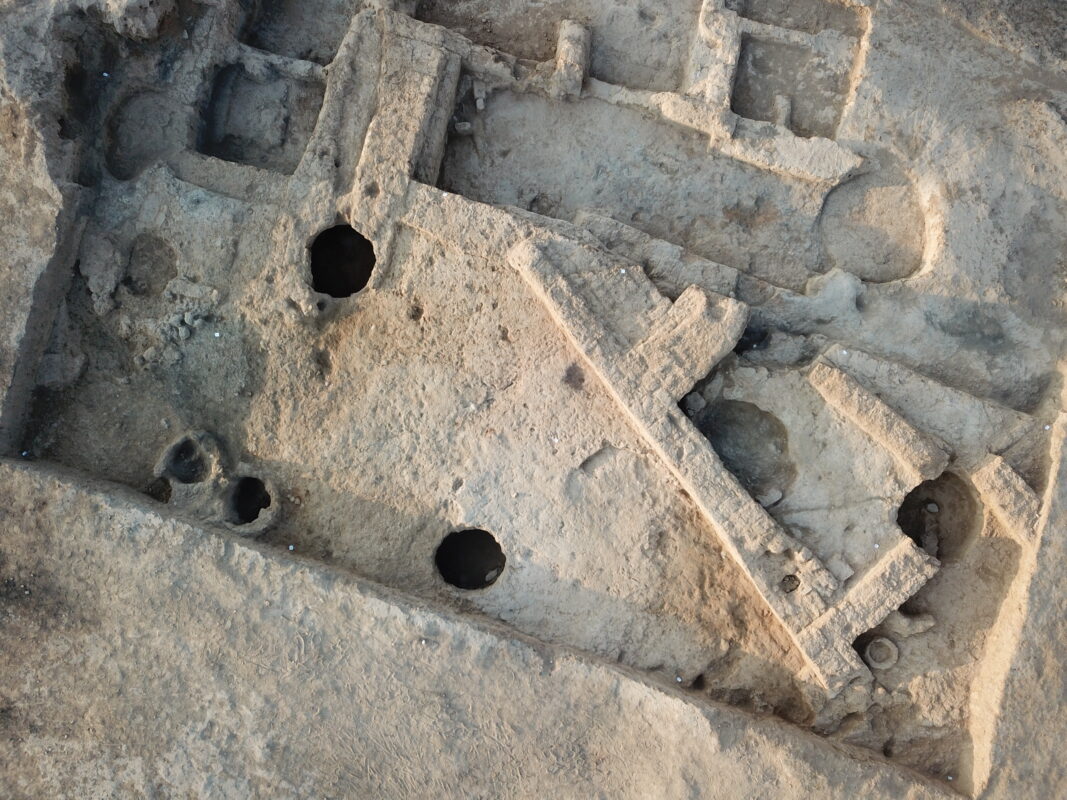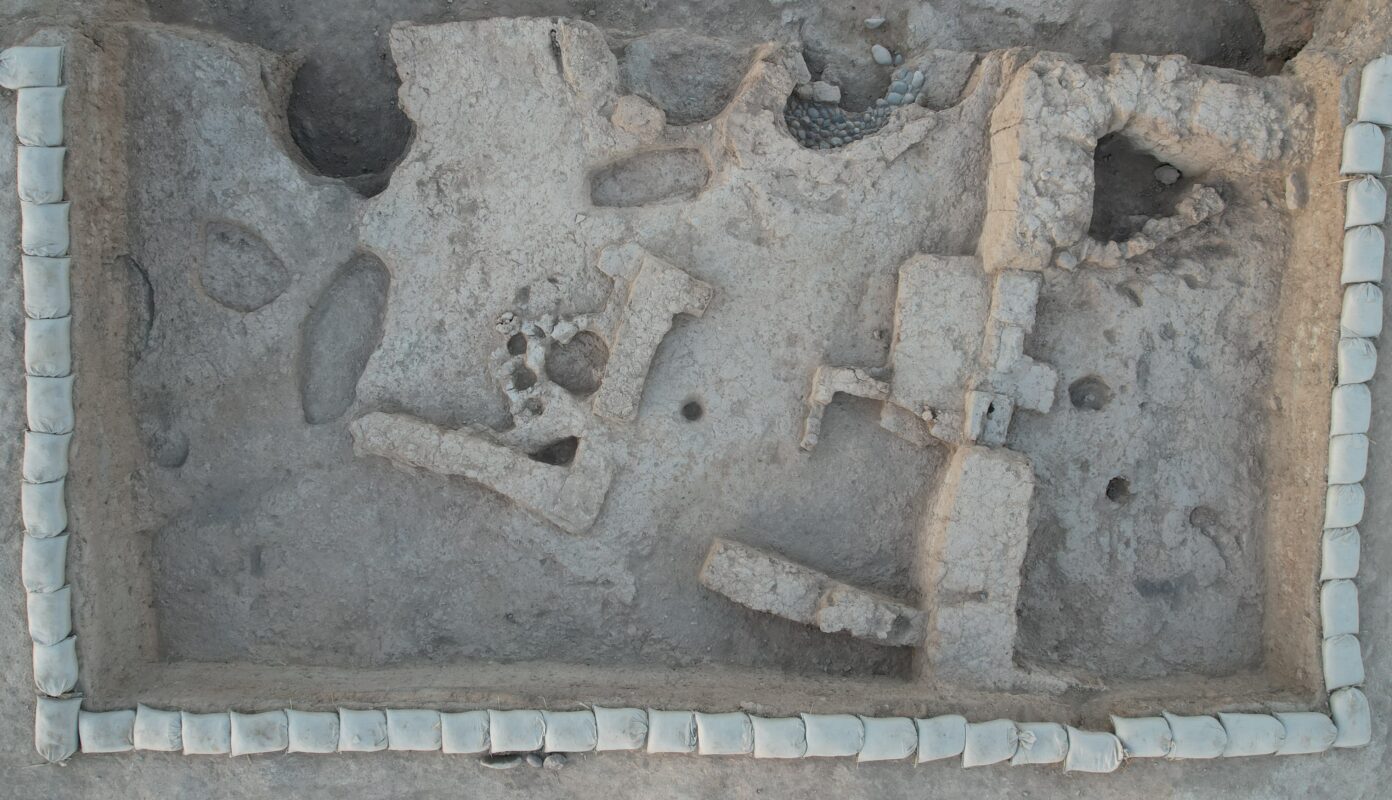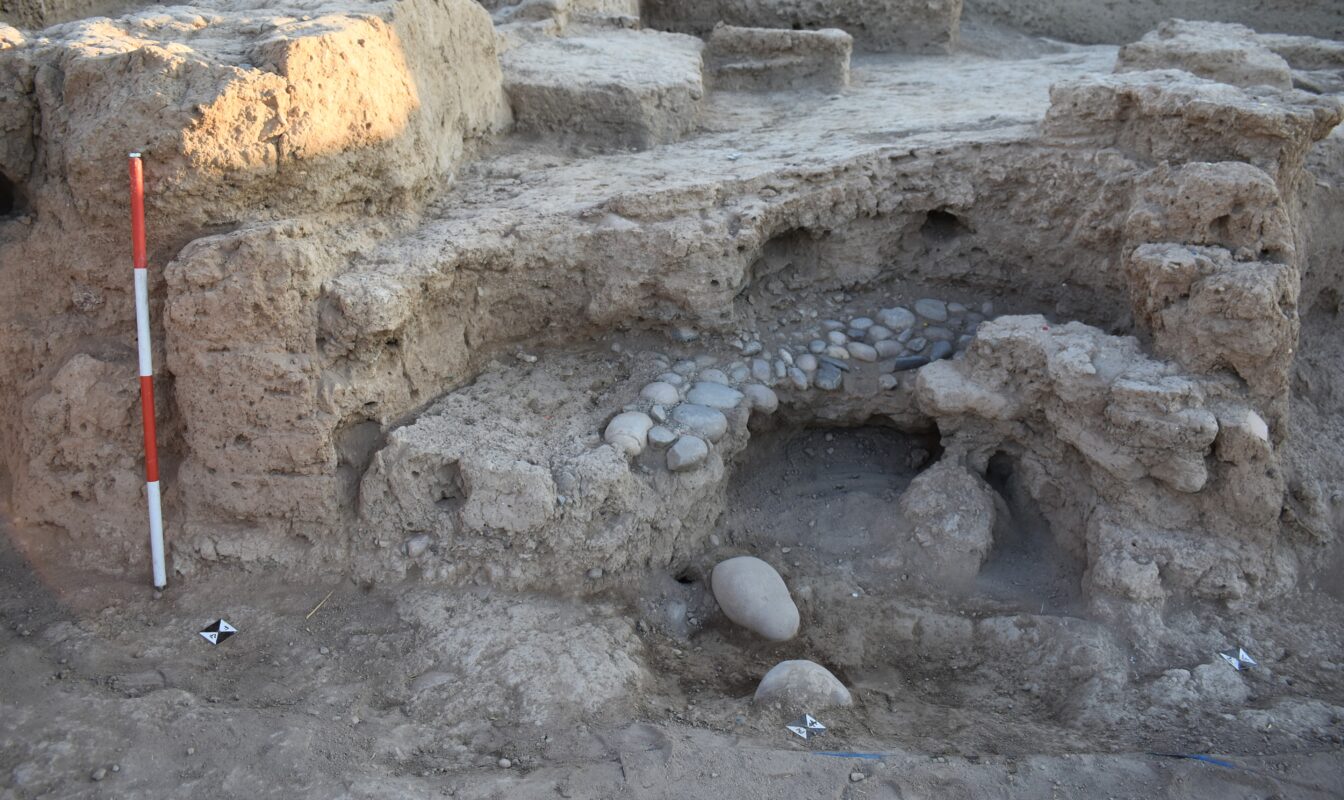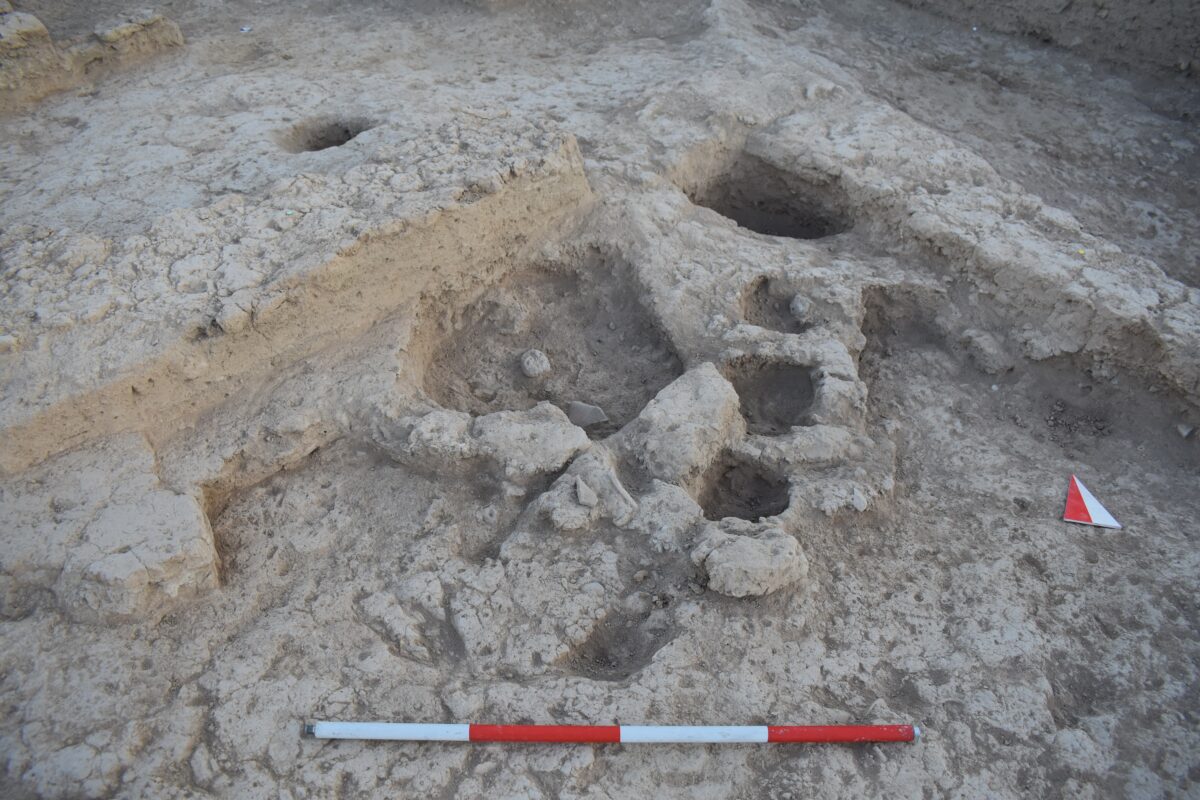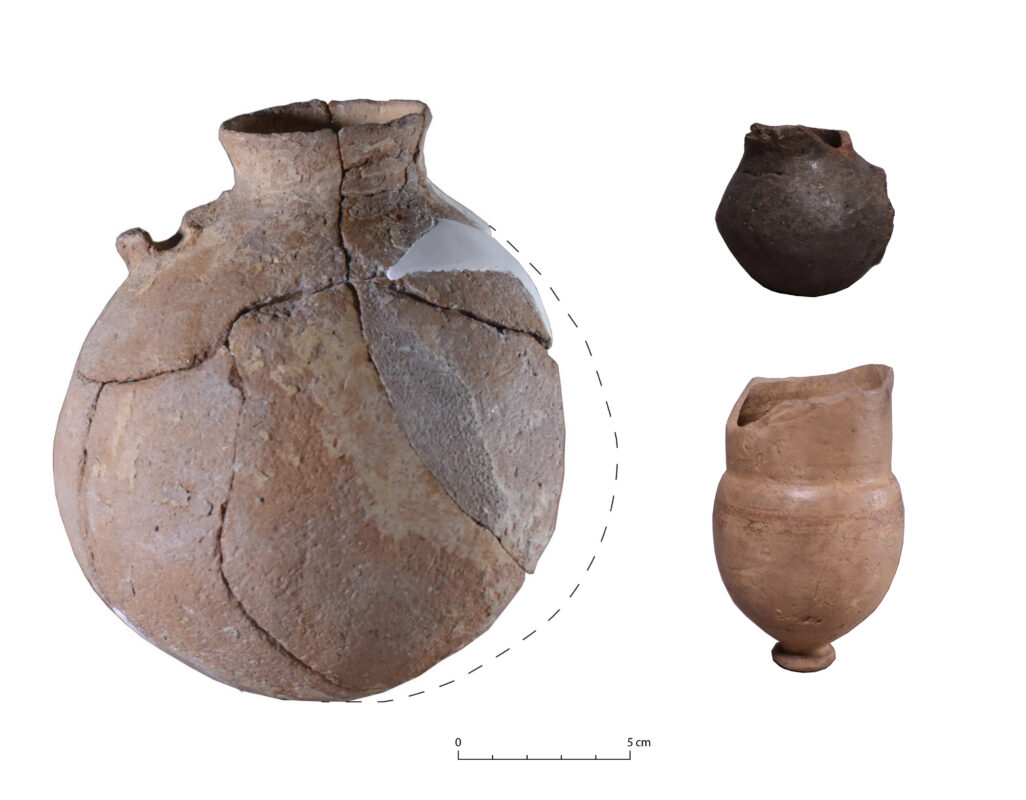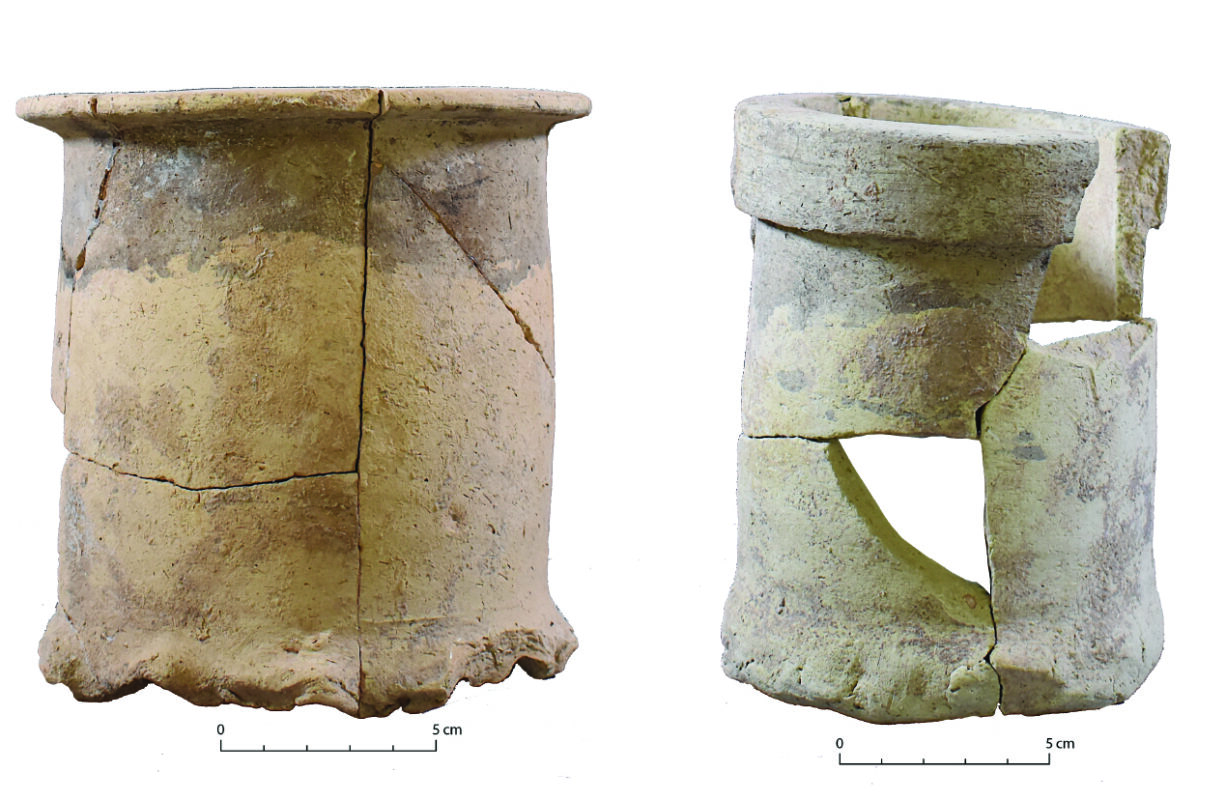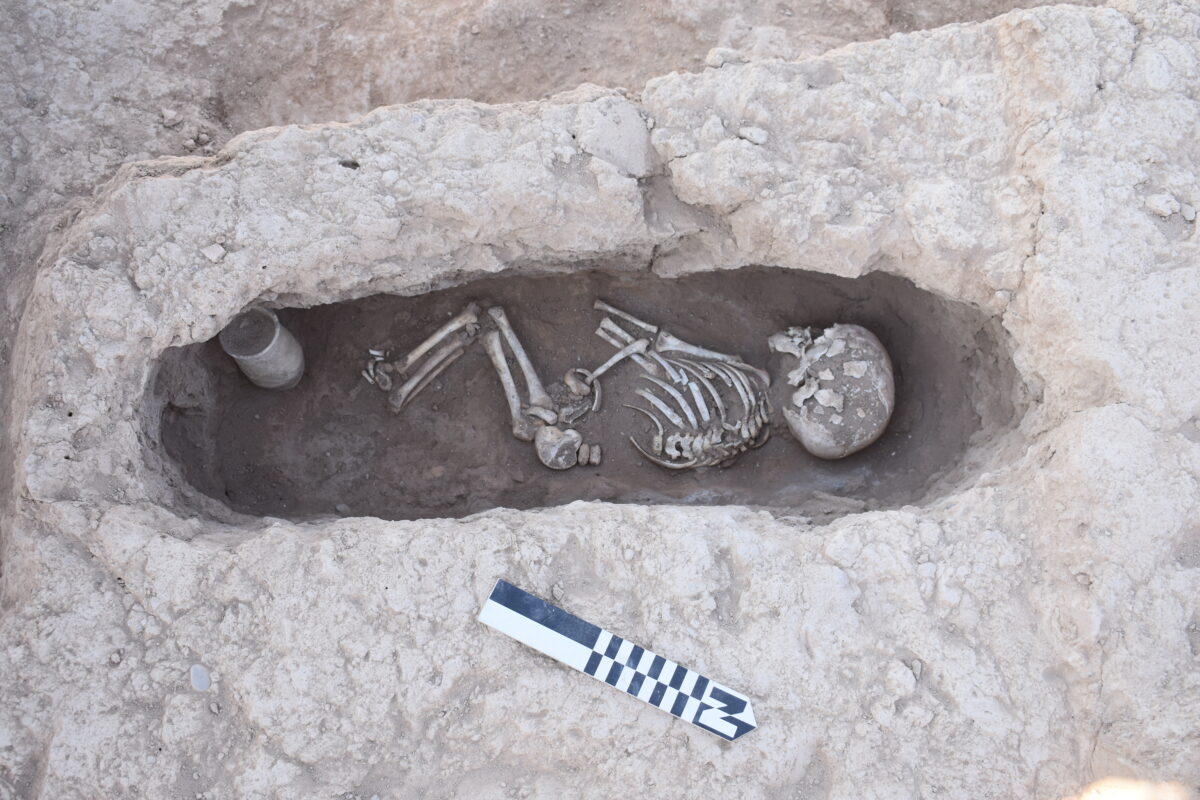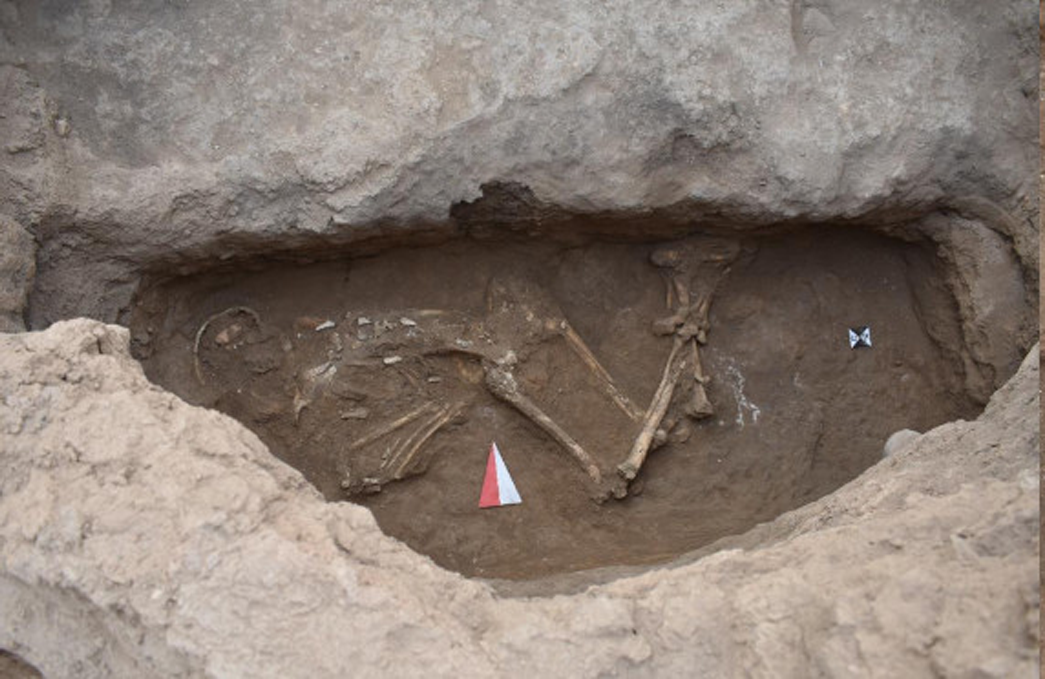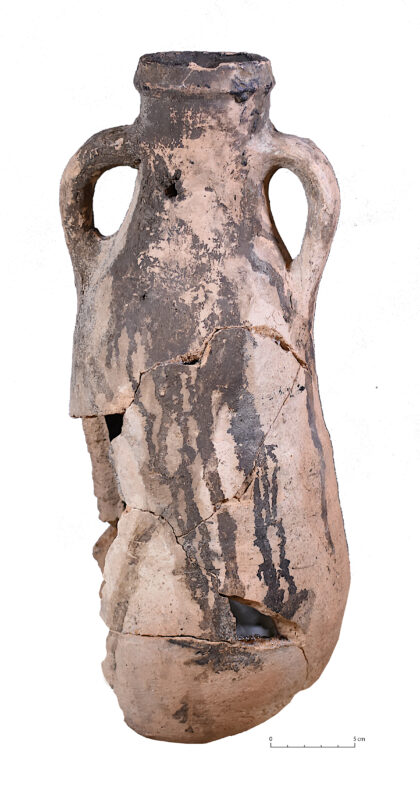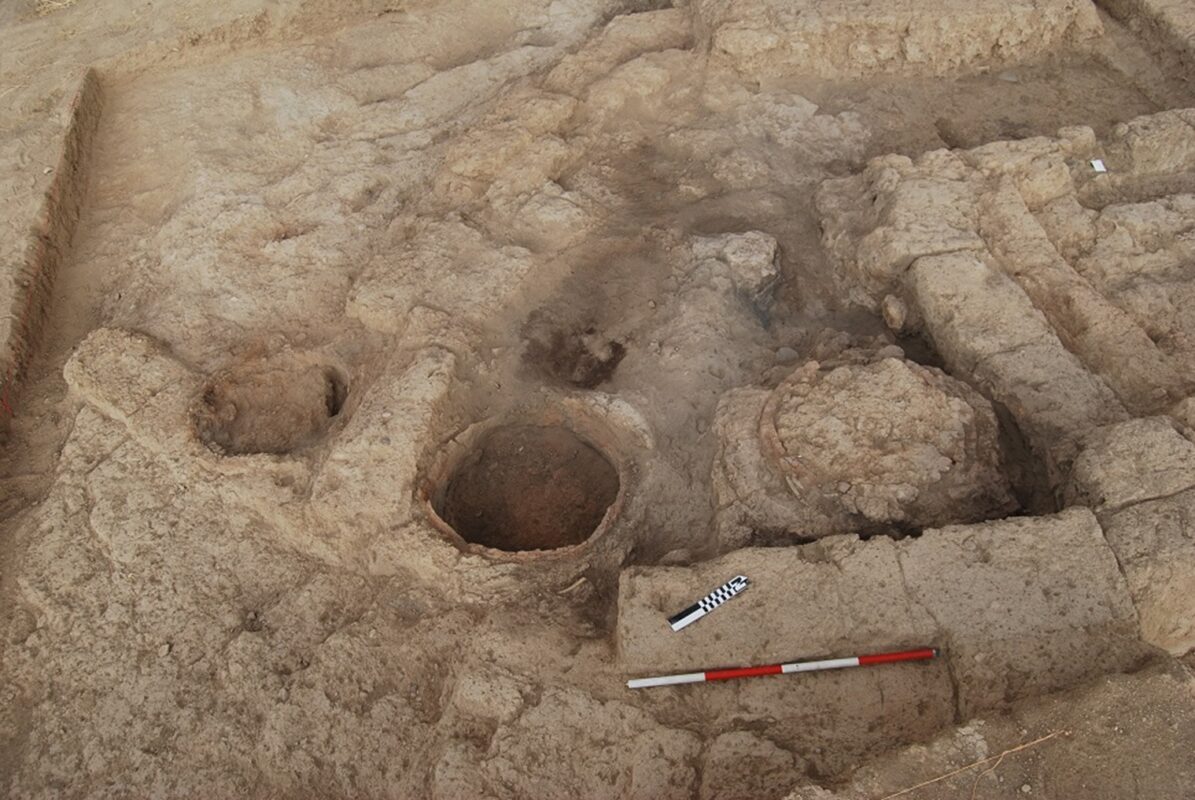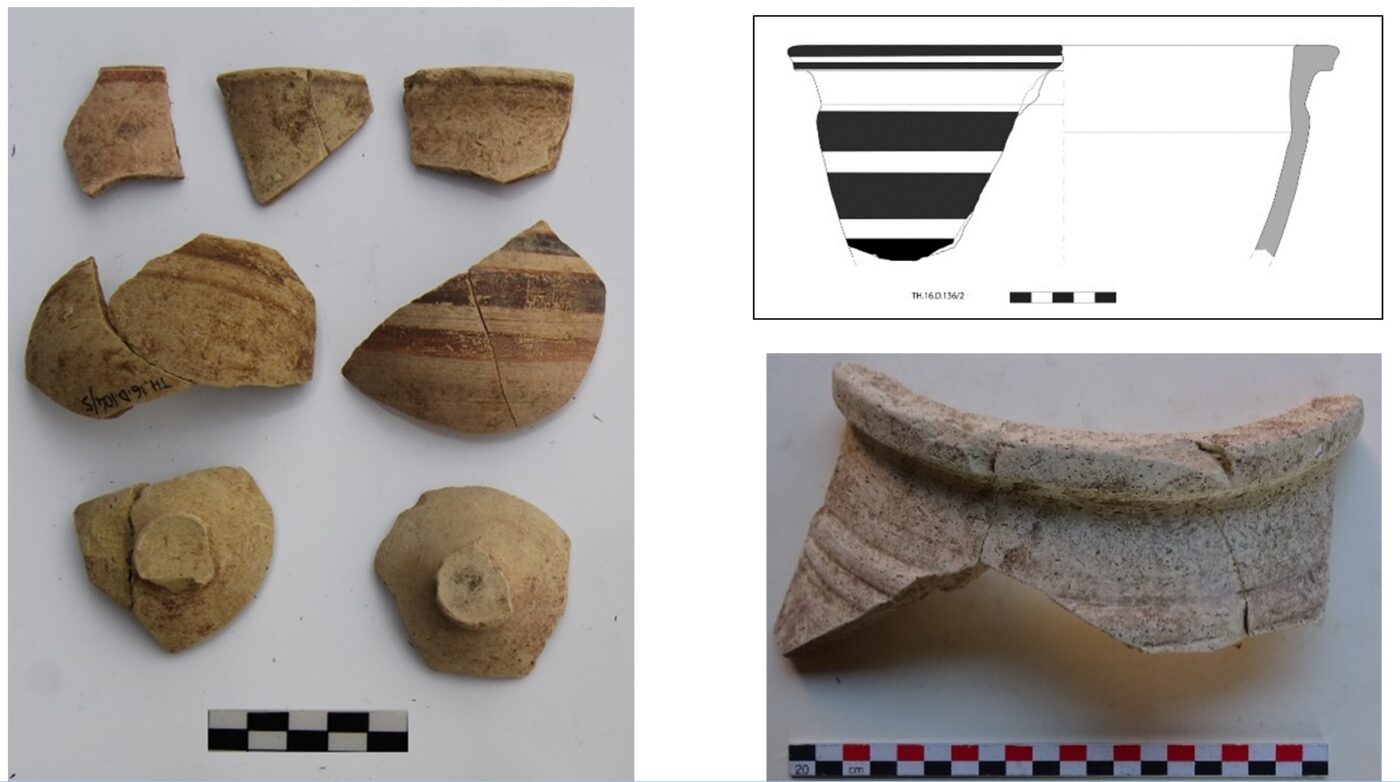In the excavation trench located on the southern slope of the site, we documented a very long and continuous occupational sequence from the 7th to the 4th millennia BC which allows the exploration of the crucial transition in the Erbil Plain from Neolithic agricultural villages to the first urban structures in Northern Mesopotamia. The most ancient levels were reached in 2019 and belong to the Halaf period (end of 7th-6th millennia BC), when the Erbil plain underwent a demographic growth with groups of farmers and herders exploiting the available web of water canals. During this time frame, communities were well-connected and shared a number of similar cultural traits, such as fine painted pottery and circular dwellings, traits which are recurrent in a vast area ranging from Anatolia to Syria and in Northern Mesopotamia. At Helawa, the village was probably no larger than 2-3 hectares and different phases with associated pressed clay (pisé) structures were exposed, together with installations made of ovoidal bricks, fireplaces, ovens for food preparation and a pebble platform. The pottery of this period (Late Halaf) features polychromic decorations with geometric designs and the most popular shapes include small jars and cups with flaring walls.
read more
The following phase relates to the Ubaid period, dated to the end of the 6th and the first half of the 5th millennium BC. The settled area is still rather limited, however new elements which suggest a more visible degree of social and economic complexity are present. A structure composed of single cell-like rooms associated to a pottery kiln probably belongs to a production area in the village.
After the abandonment of the production complex, the area was utilized as a dump, as the ashy levels and the great amount of pottery, small objects, animal bones and botanical remains suggest. This level yielded numerous poorly baked ovoidal clay objects (interpreted as projectile points), a number of ceramic cones, spindle whorls and modified pebbles which were utilized as percussion and smoothing tools. Awls, bone implements and ornaments including a stone pendant with decorative incisions were also found.
The painted monochrome pottery comprises typical late Ubaid shapes including bowls and small jars and features a number of decorative patterns ranging from linear designs to parallel bands and checkerboard motifs. Human figures and animals are very rarely depicted, and the jar fragment with the goat with backward-bent horns in combination with a stylized profile of the site was chosen as MAIPE’s logo.
Decorated stone pendant dated to the Halaf period
Decorated stone pendant dated to the Ubaid period
The evidence of the Late Chalcolithic 1 (4800/4500-4200 BC) settlement includes a number of dumps probably belonging to a furnace (which suggests a continued artisanal vocation of the area), and a workshop for the processing of obsidian imported from eastern Anatolia. Just above these levels, an early LC 2 (4200-4000 BC) building with quadrangular rooms connected by stairs was revealed. The building was flanked to the East and West by circular ovens likely devoted to food production activities. Within the structure itself, numerous vessels, stone objects and a copper pin were found. Typical LC 2 pottery types comprise serially produced conical bowls with fabrics rich in vegetal inclusions (the so-called ‘Wide Flower Pot’) and jars with flaring necks and specimens with a grey fabric. Both the construction materials and the building technique suggest that this structure was of some prominence, supporting the hypothesis of a certain degree of socio-economic complexity at the site. The building was later obliterated by a number of LC 2 silos which were utilized for the storage of foodstuffs. Archaeobotanical analyses have demonstrated that barley and cereals were predominant among the remains both in the installations and in their associated levels. Thus, it is clear that in the village, which the survey has shown to have been larger than 5 hectares, centralized storage operations were being performed. Three infant jar burials are also associated with this phase. The final Late Chalcolithic (final 2 and early 3) occupation (ca. 4000-3700 BC) is characterized by restored and modified walls together with a series of raised floors. The administrative building exposed in Area B1, just to the west of the Step Trench, belongs to the early part of this period.
The technological analysis of flint and obsidian stone tools provides interesting data regarding the changes which occurred between the most ancient periods (Ubaid and LC 1) and the more recent occupations (LC 2-3). In the earliest phase (Ubaid), lithics were worked exclusively inside the domestic units and in the identified functional areas. Most of the reduction processes aimed at obtaining small flakes through non-specialized techniques in order to achieve specific tools and sickles to harvest wheat. During the LC 1, alongside the continued presence of the Ubaid lithic tradition, more elaborate methods which made use of more regular bladelets were also adopted. At Helawa, this phase coincides with the peak of imported Anatolian obsidian which was worked locally for the production of bladelets in the identified artisanal area.
During the more recent periods (LC 2-3), socio-economic changes took place. Lithic production only involved the realization of domestic tools, while sickles were now made from large blades of good quality flint. These instruments were produced by specialized and independent artisans who were most likely active in specific workshops situated close to the raw material extraction sites.
The bio-archaeological data collected from the levels of the Step Trench have enabled an initial reconstruction of the exploitation of the local natural resources and have shed light on the environmental changes that took place during the prehistoric and protohistoric occupation of the site.
The faunal remains revealed in the most ancient phases (Halaf and Ubaid) belong both to domesticated (goats, cattle, pigs) and wild (gazelles) species. The richest documentation derives from the various phases of the Late Chalcolithic (LC 1-3). In addition to the domesticated species found in the earlier periods, the gazelle is still recurrent together with other wild animals (deer, fox).
The analyzed botanical materials (carbonized seeds, charcoals) span the chronological range between the Ubaid and the LC 3. Cereals include the cultivation of barley (Hordeum vulgare), spelled (Triticum dicoccum) and naked wheats (Triticum aestivum/durum/turgidum). Barley is the most abundant and frequently cultivated and recurs throughout all periods, although a high amount of quantitative data is available especially for the LC 2 phase where an almost entirely full silos was excavated.
Spelt is always associated to barley but it is less abundant. Naked wheats appear to be a secondary cultivation, acquiring importance only later during the Bronze Age. Among legumes, a few lentil seeds (Lens culinaris), southern vetch (Vicia ervilia), white pea (Lathyrus sativus) and peas (Pisum sativum) were found only in the earlier phases (Ubaid 4 and LC 1).
Kernels of Hordeum vulgare from the Late Chalcolithic 2 silos


